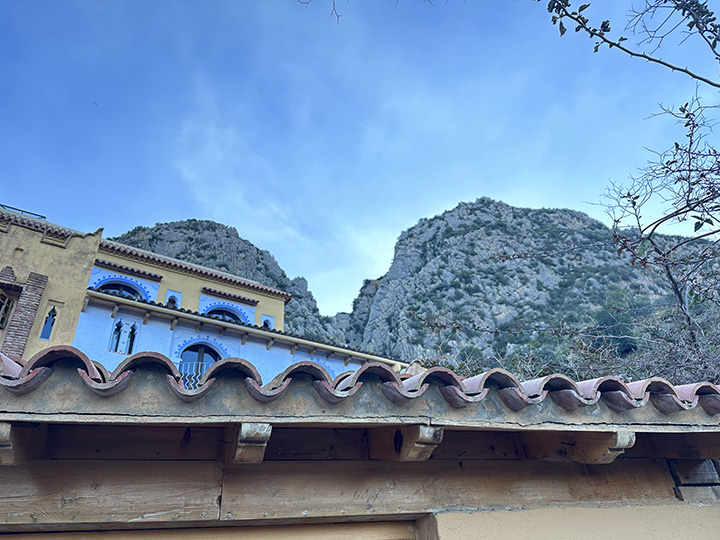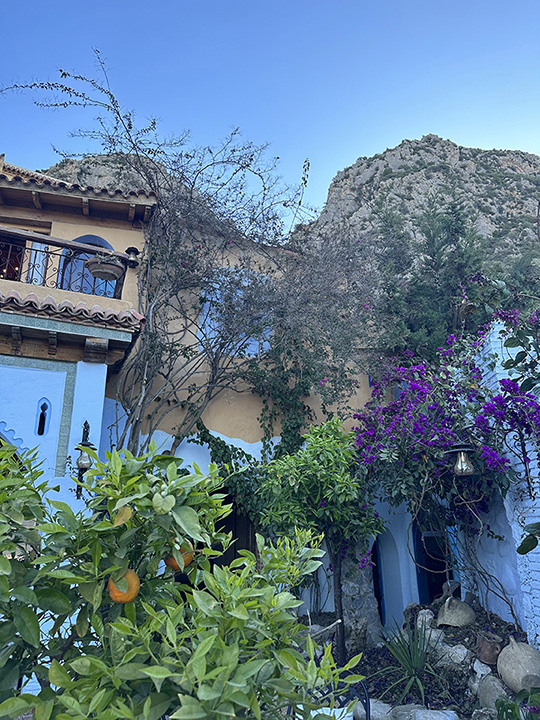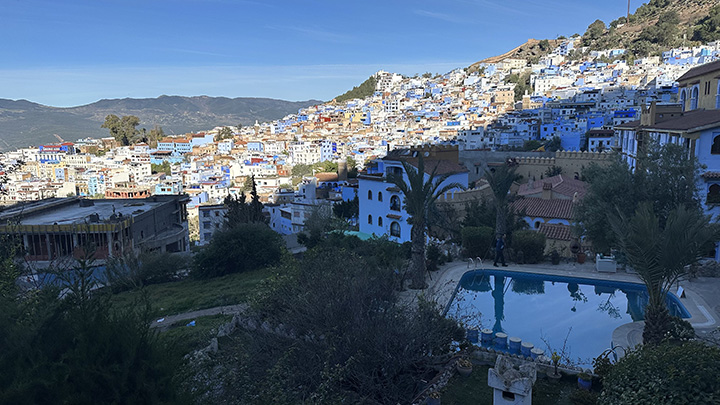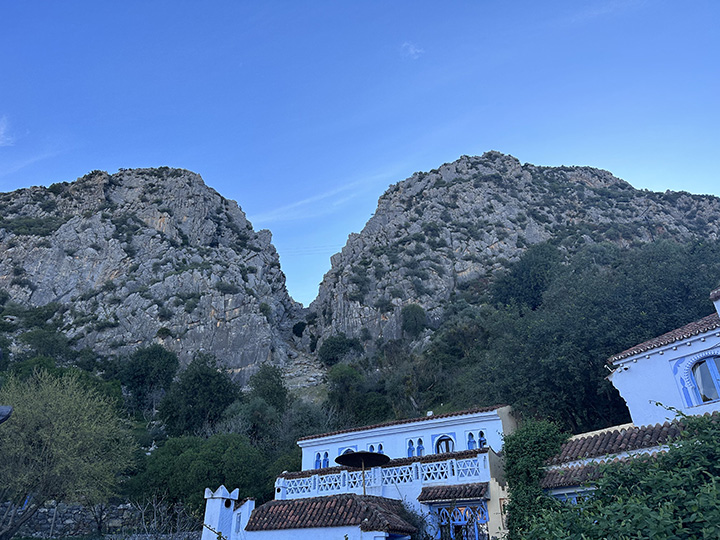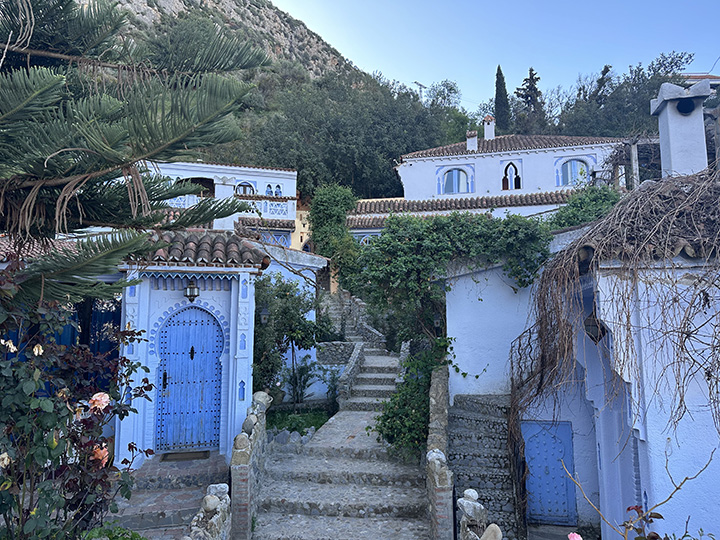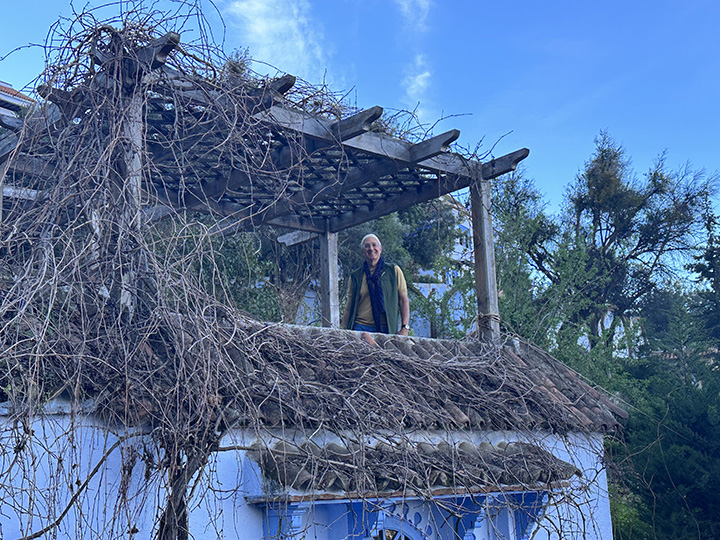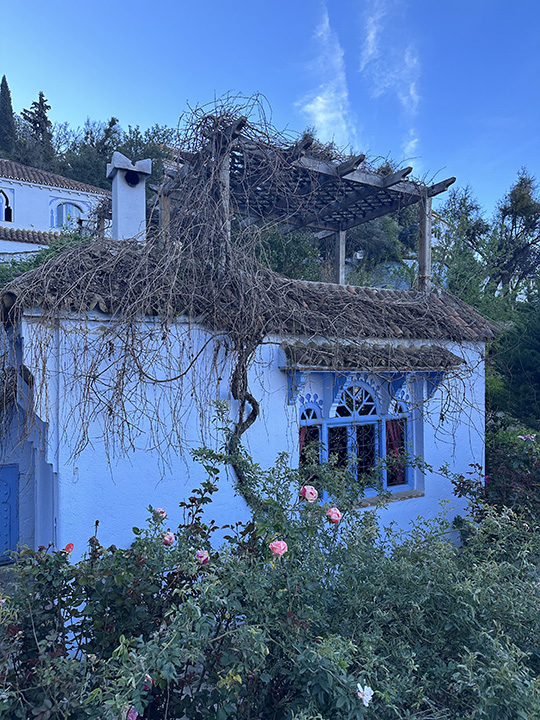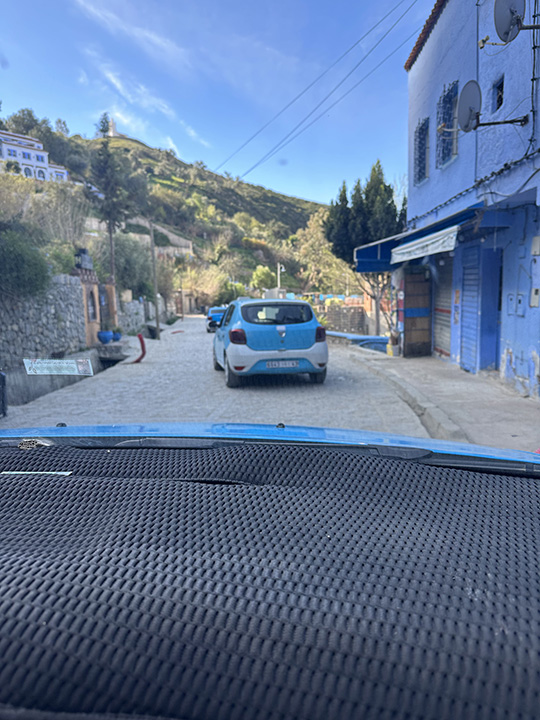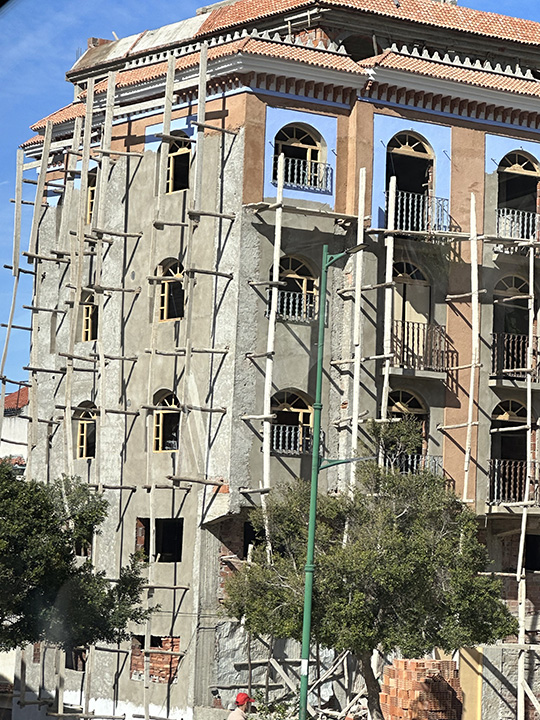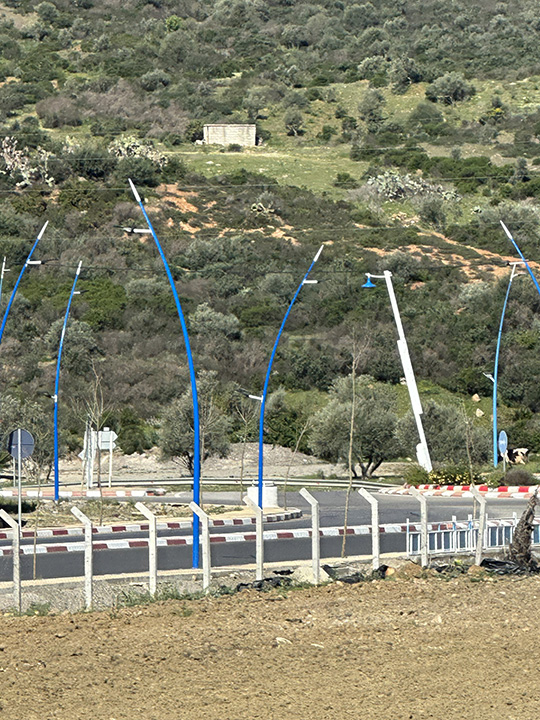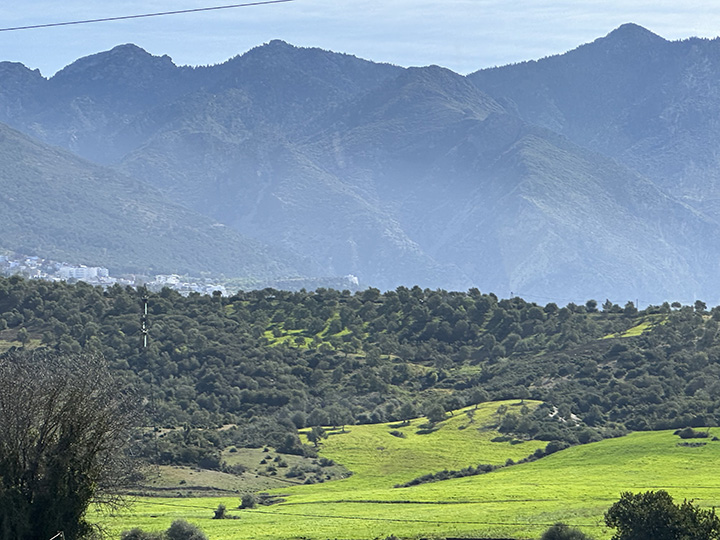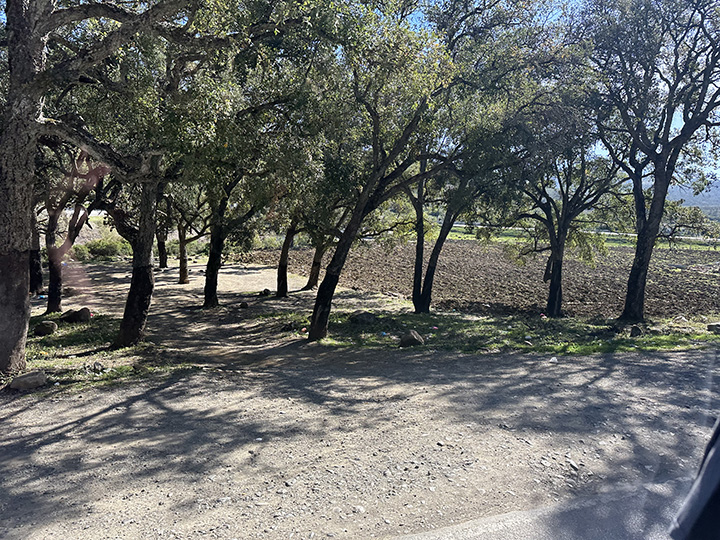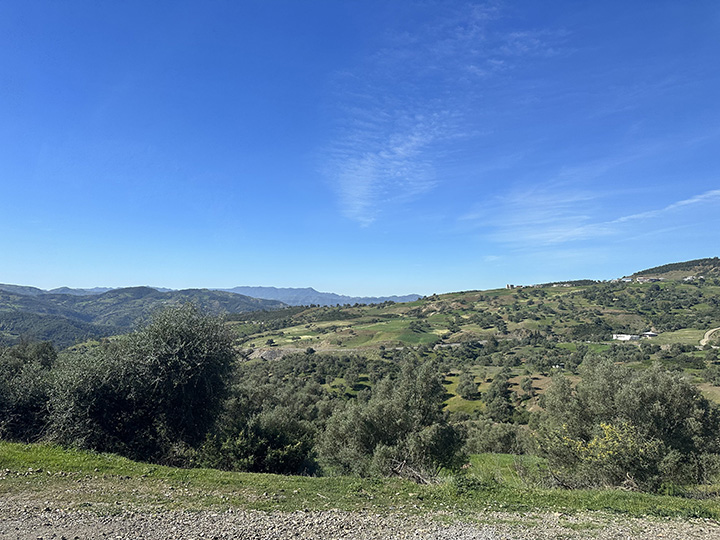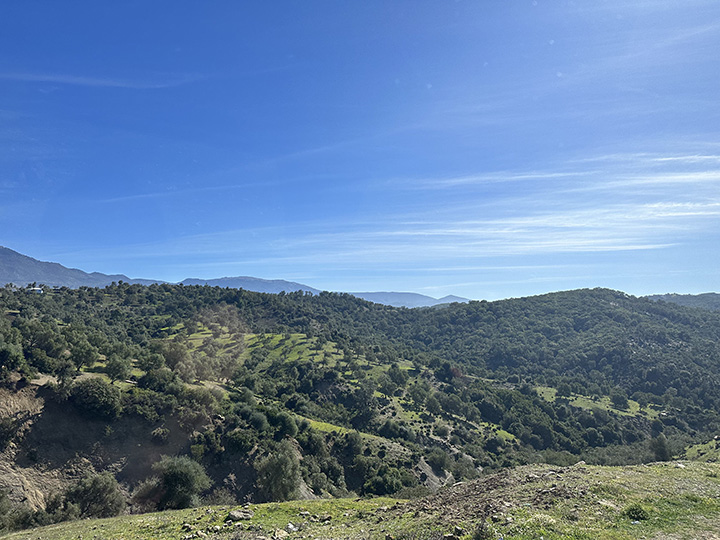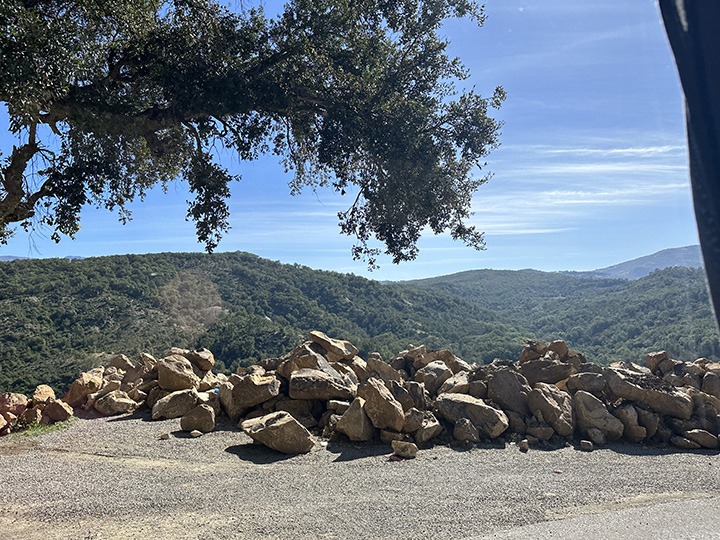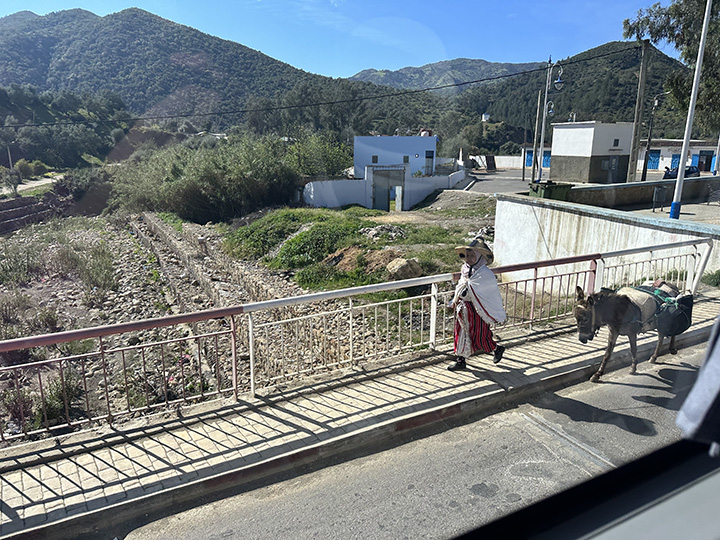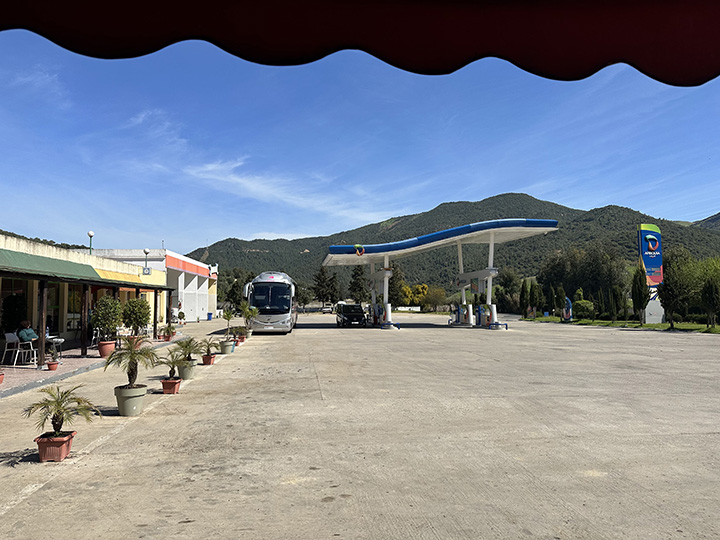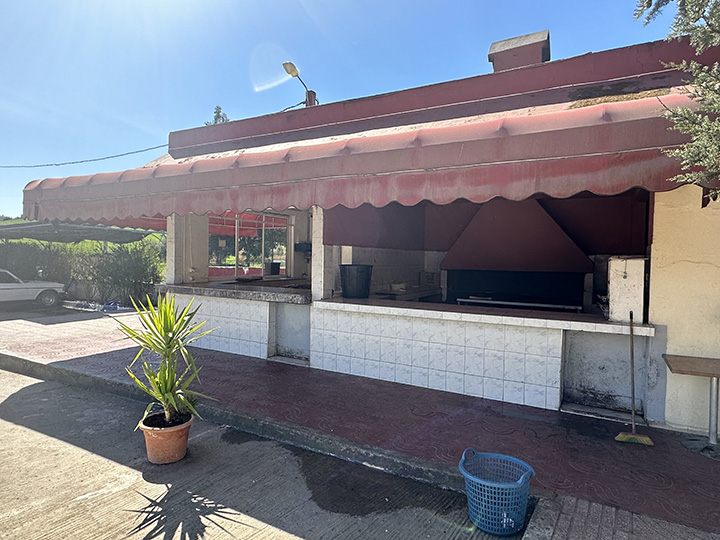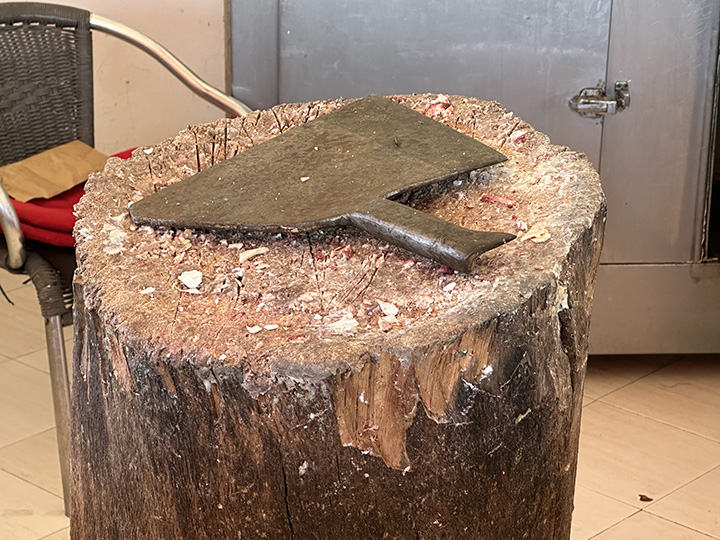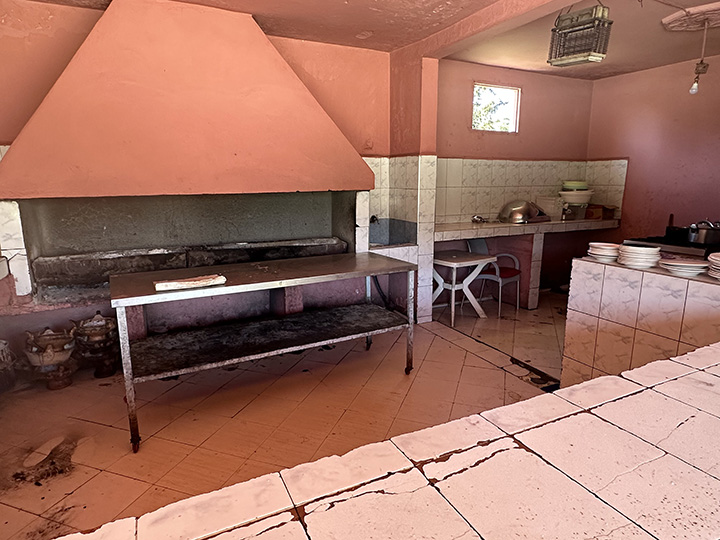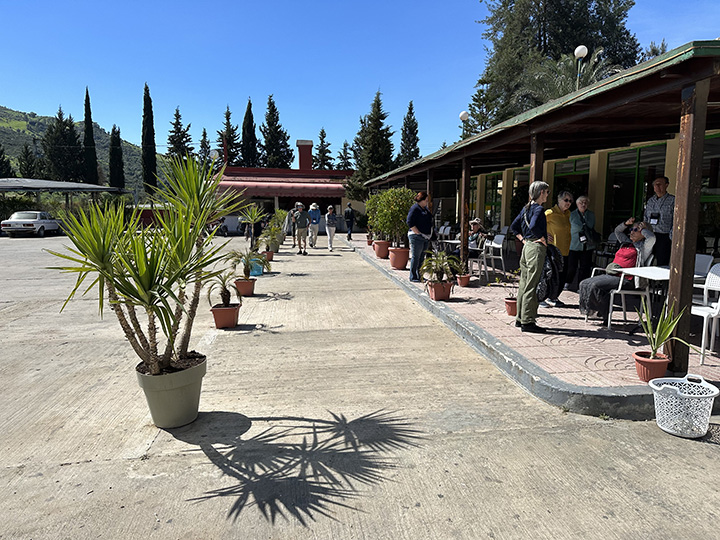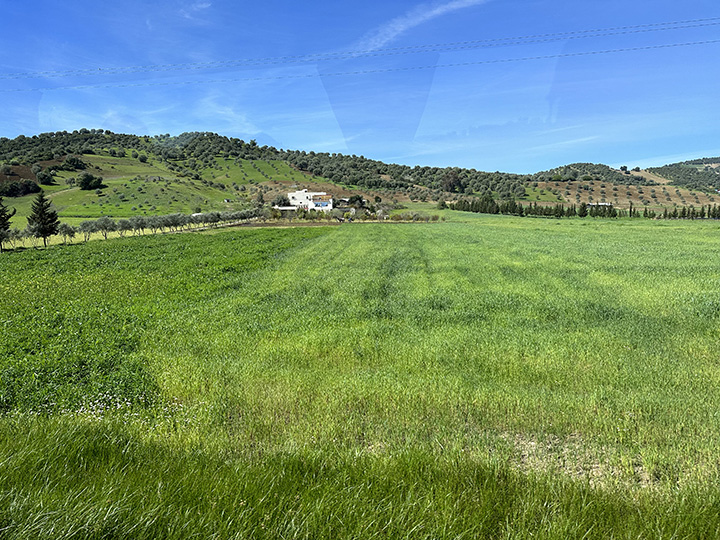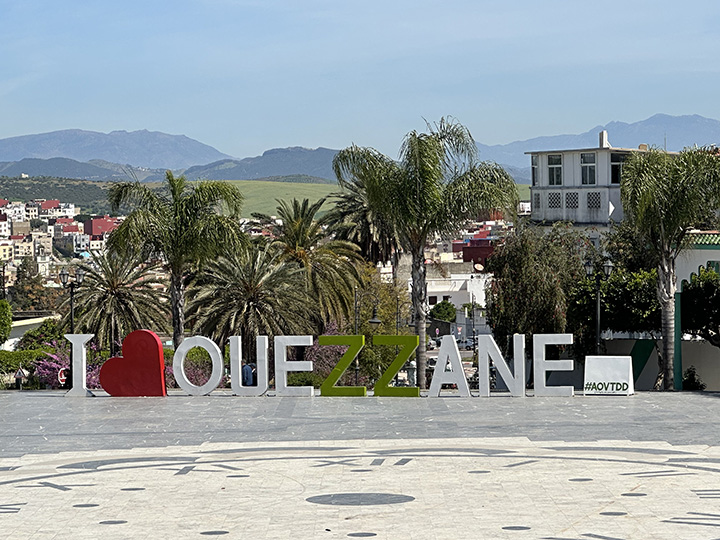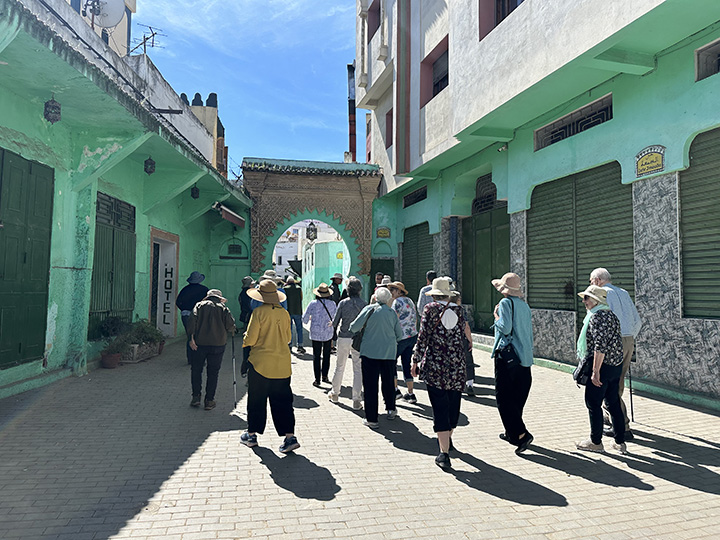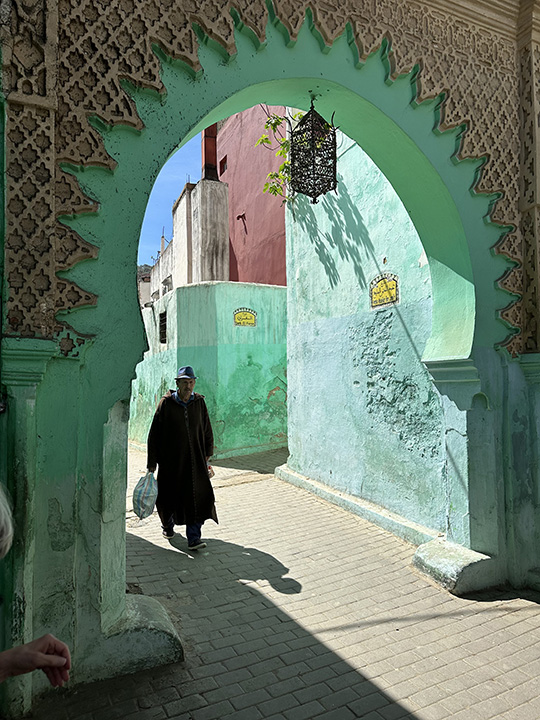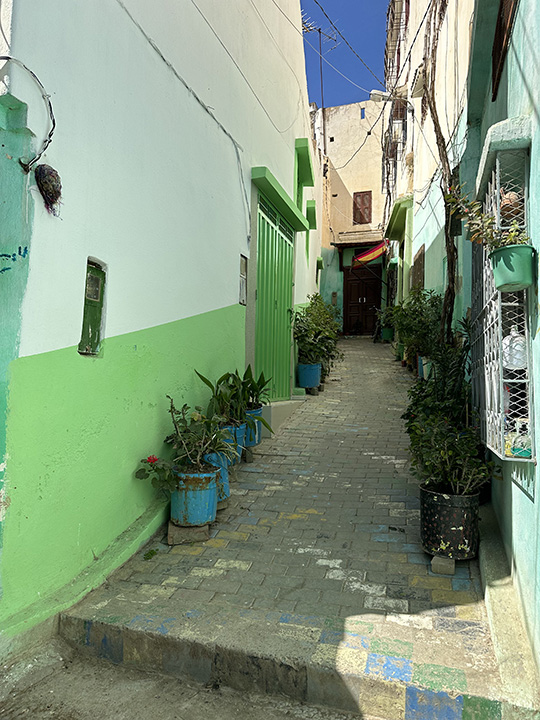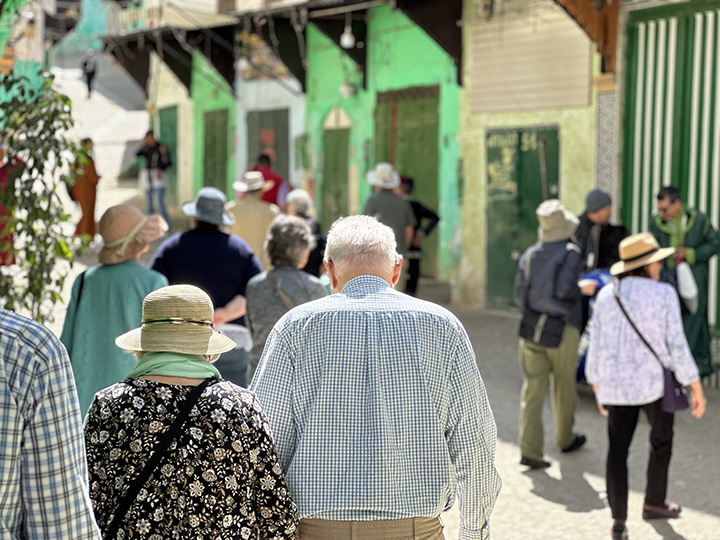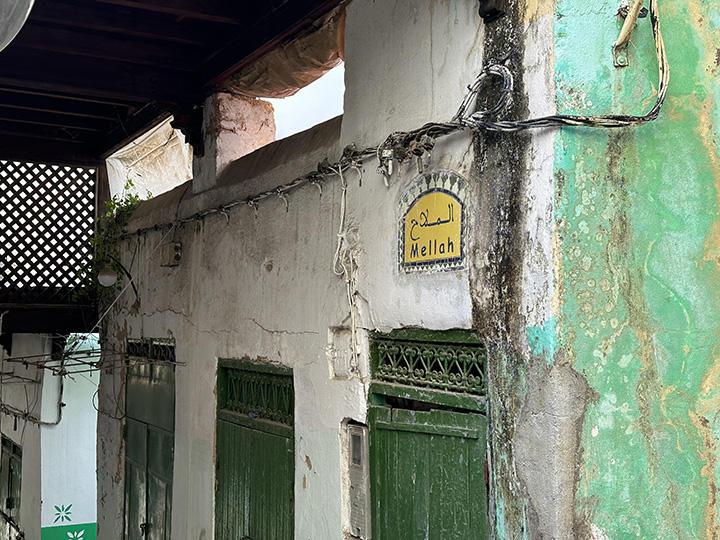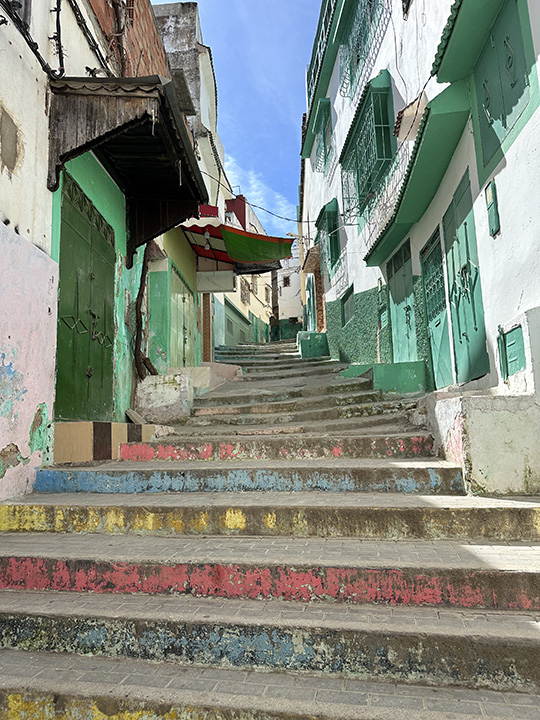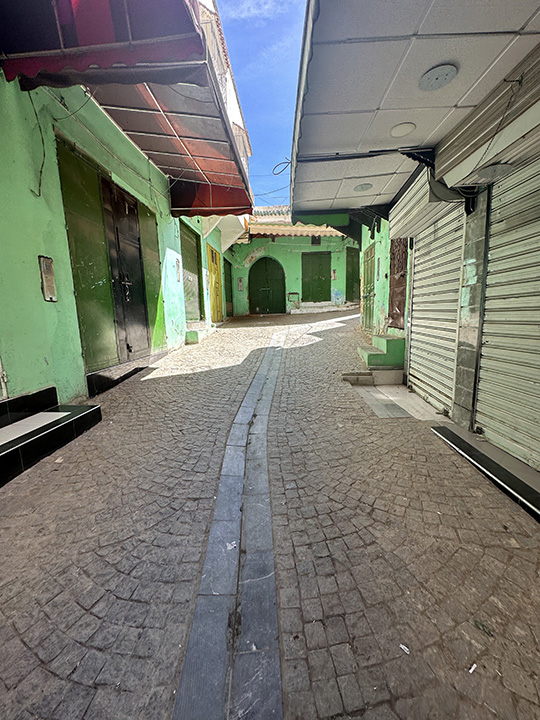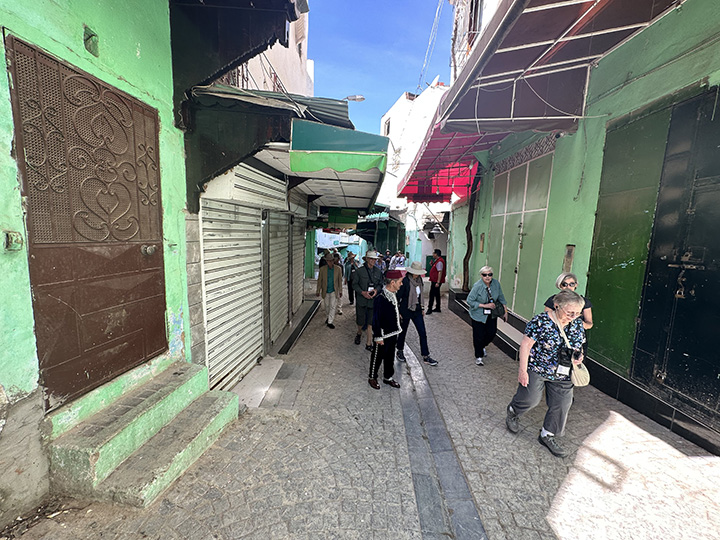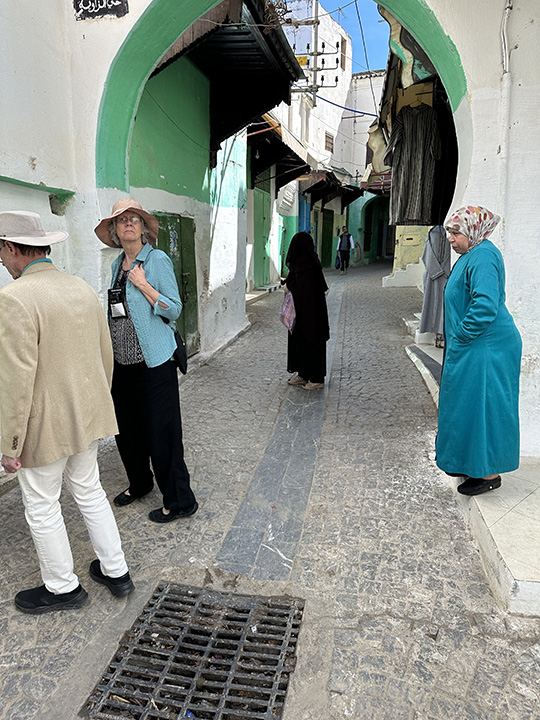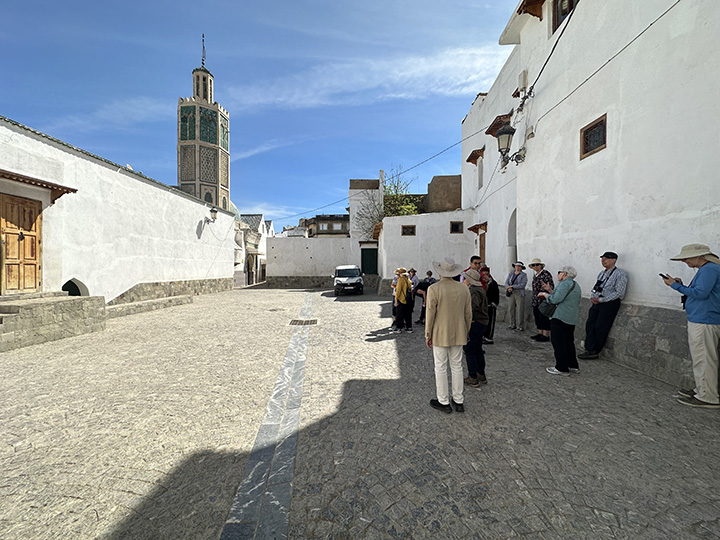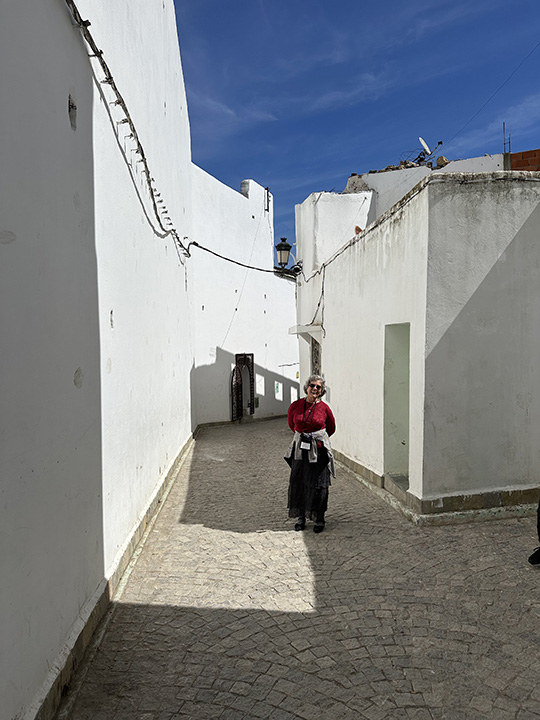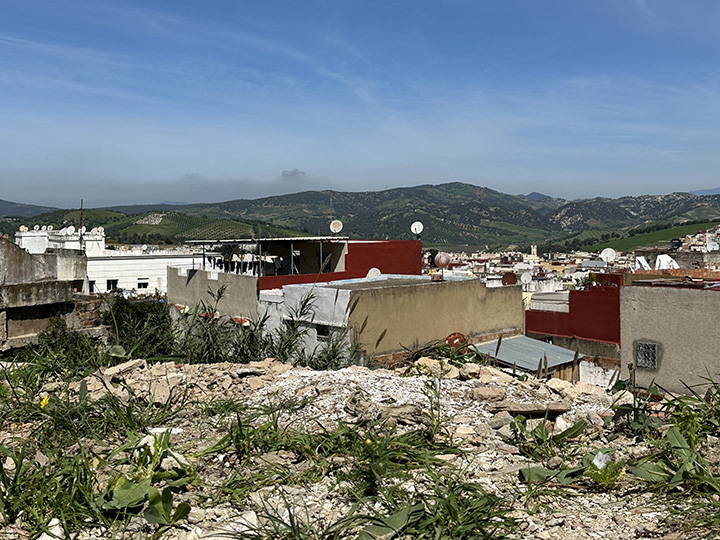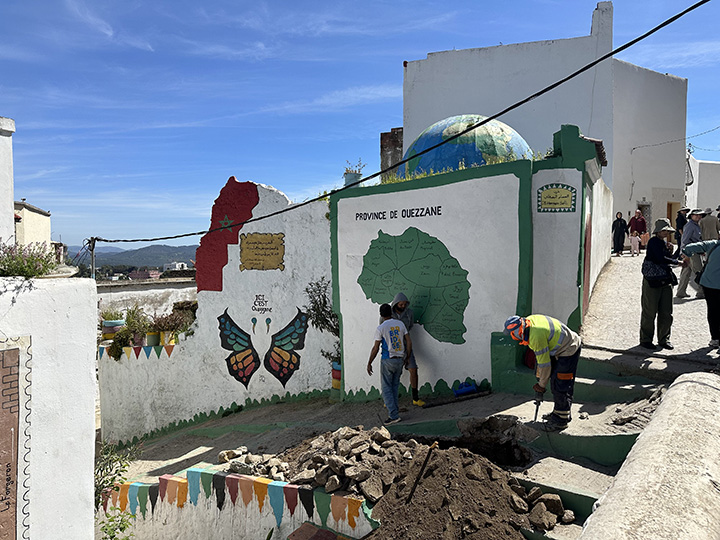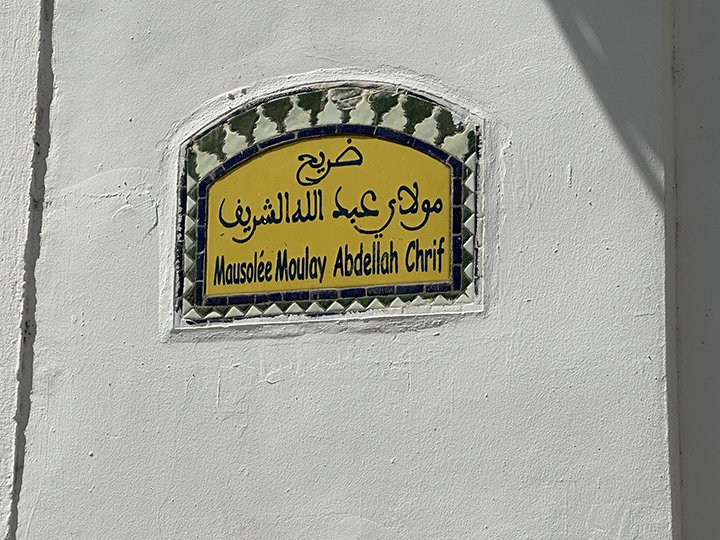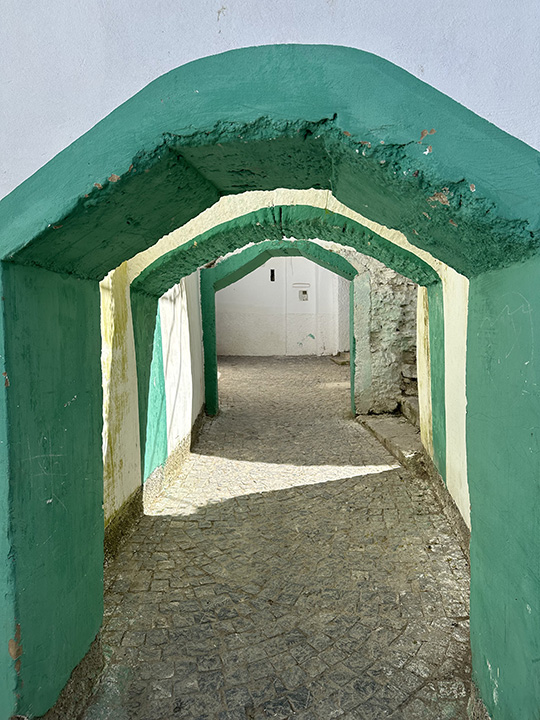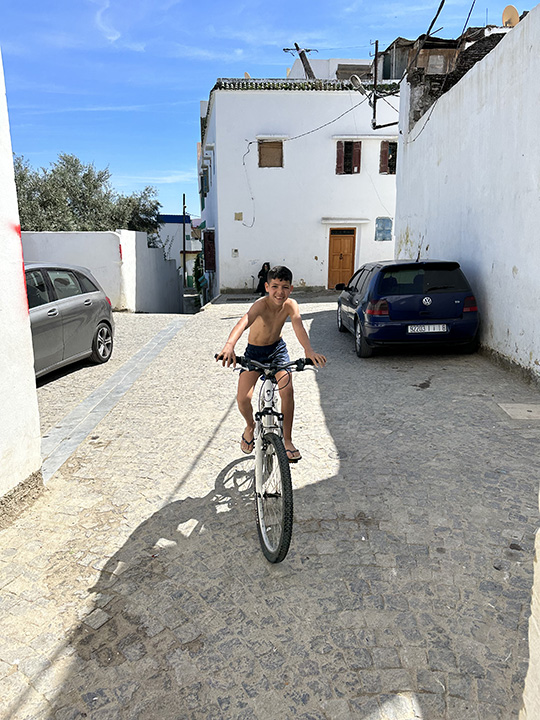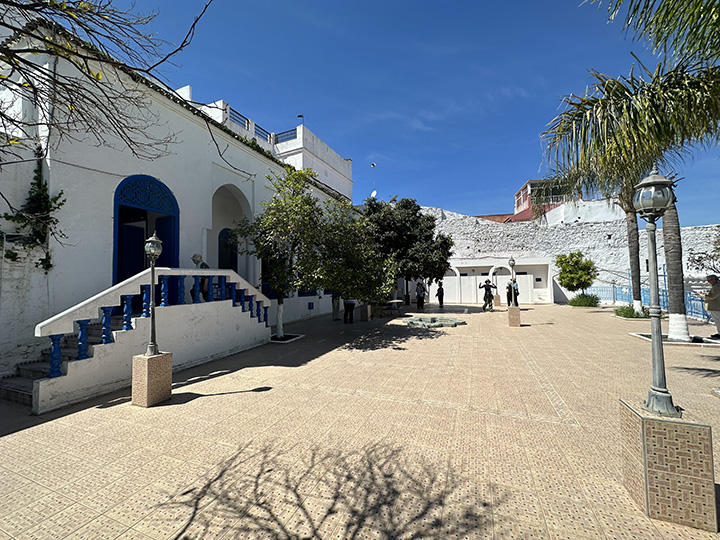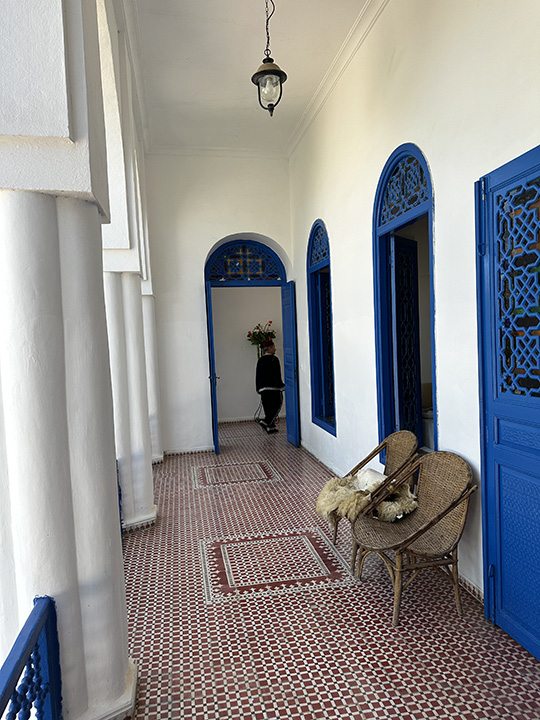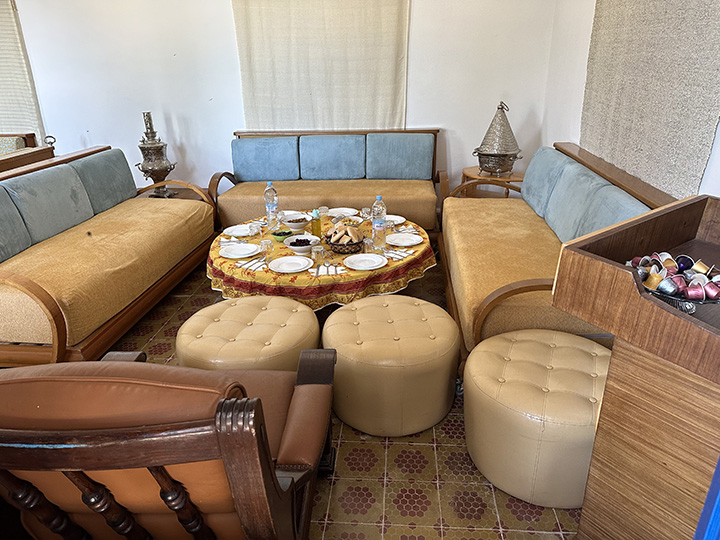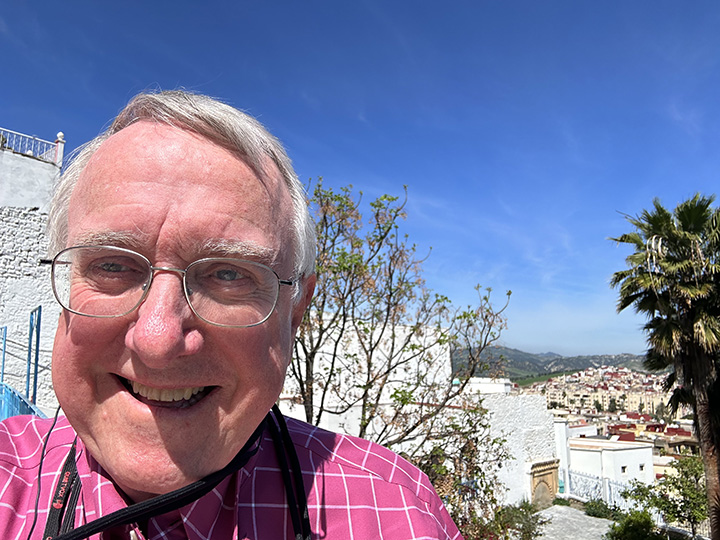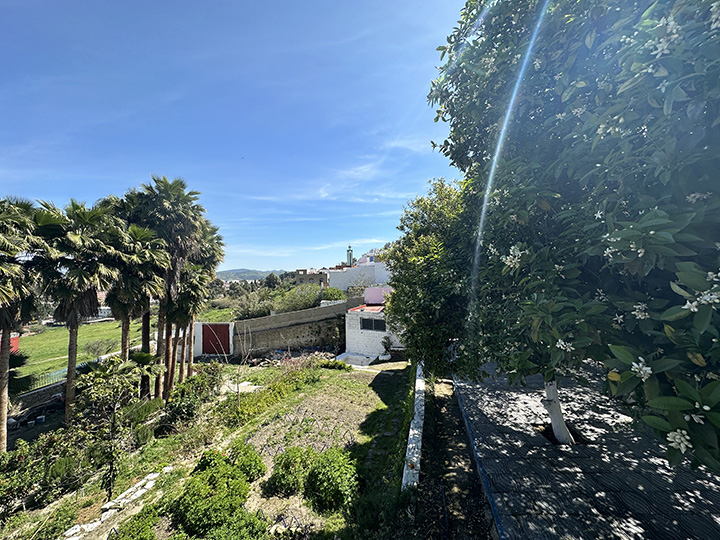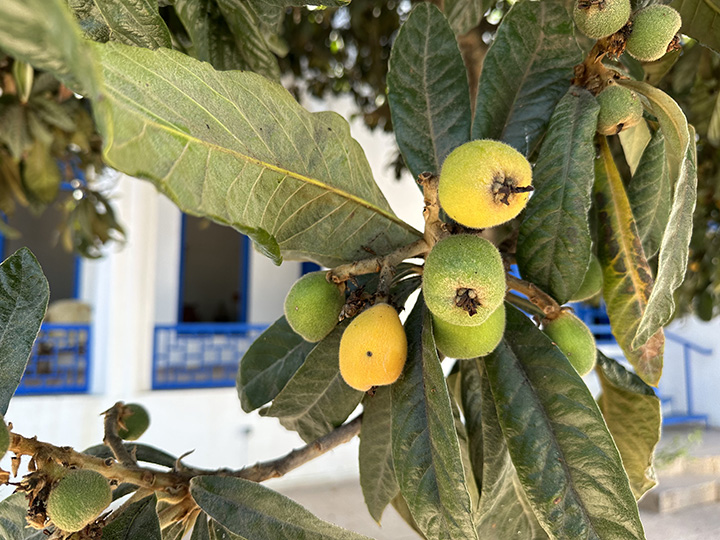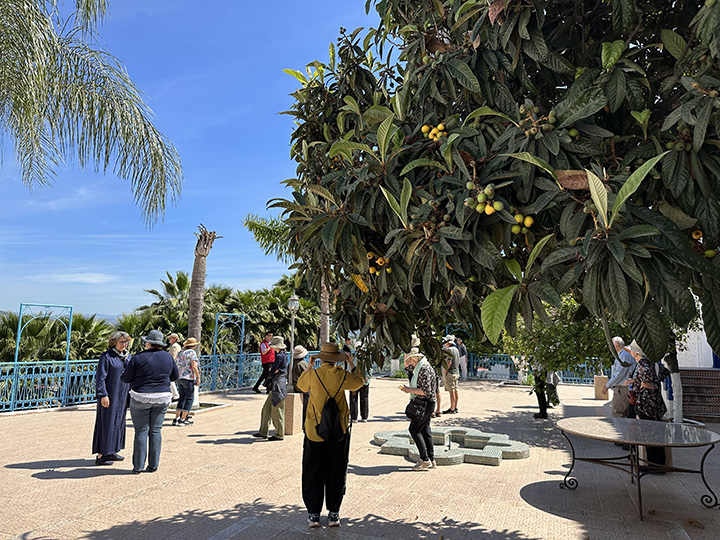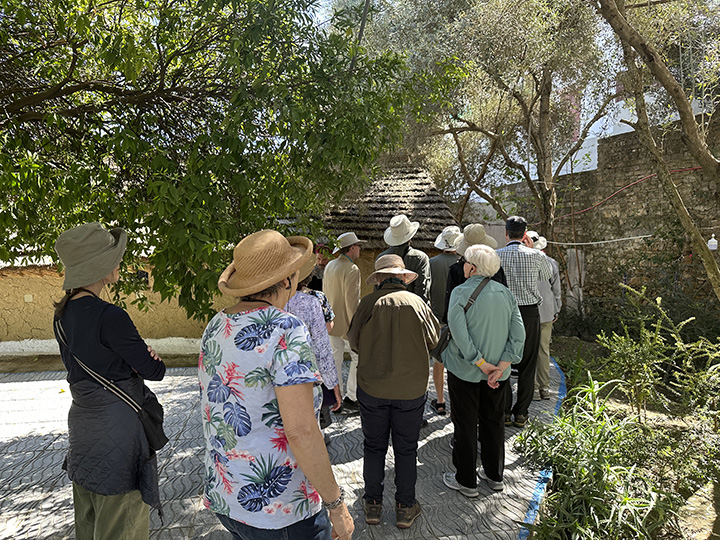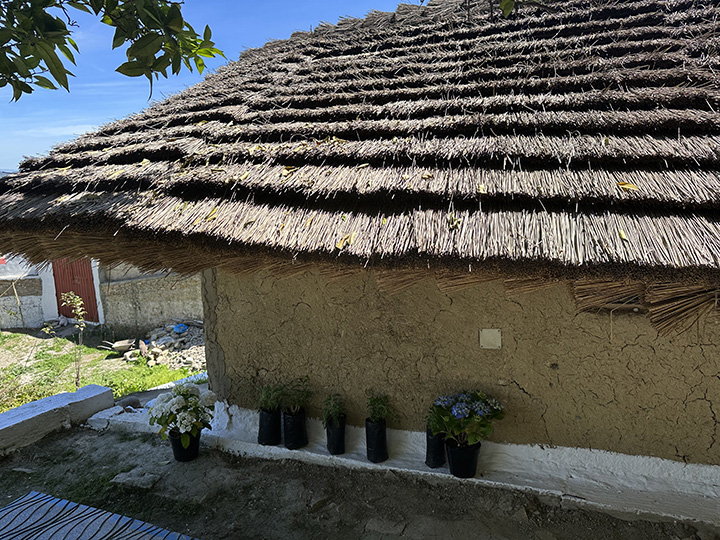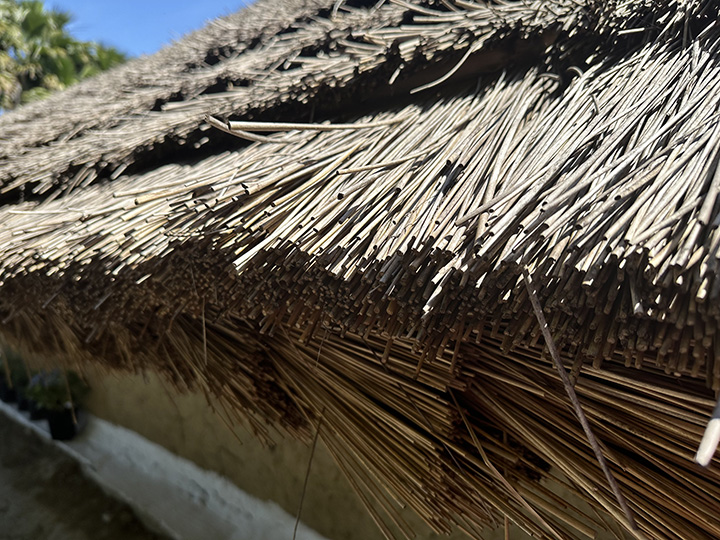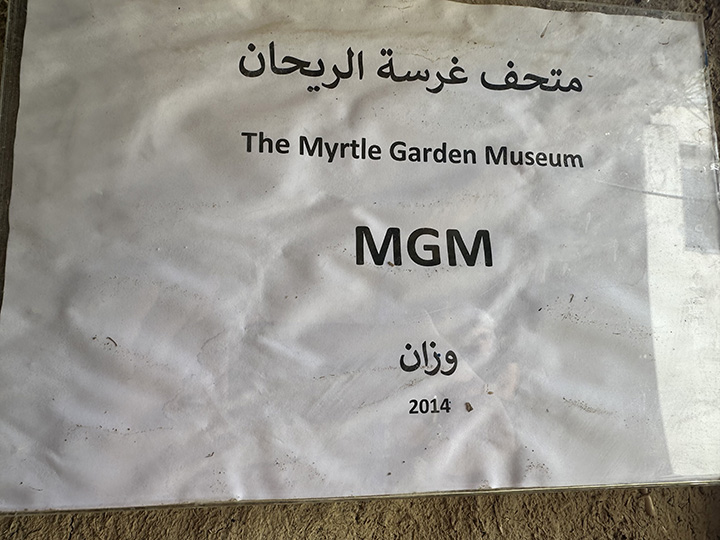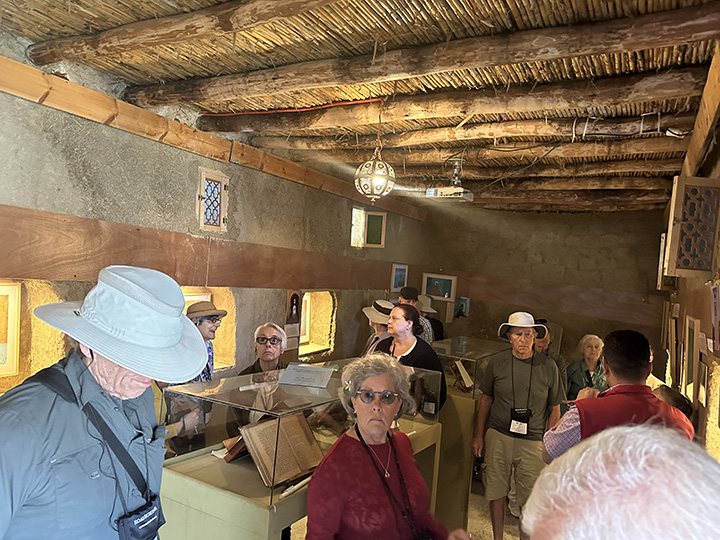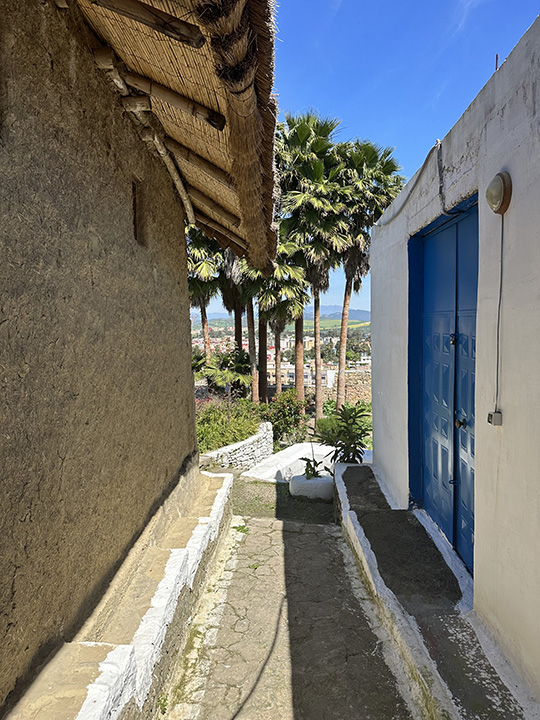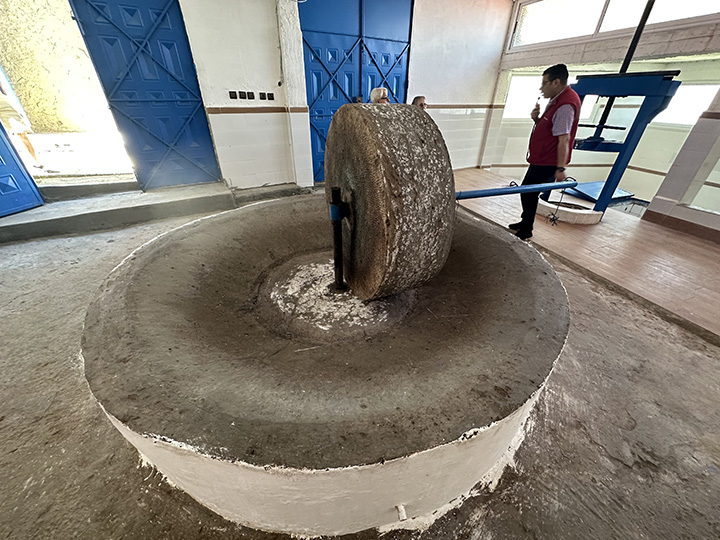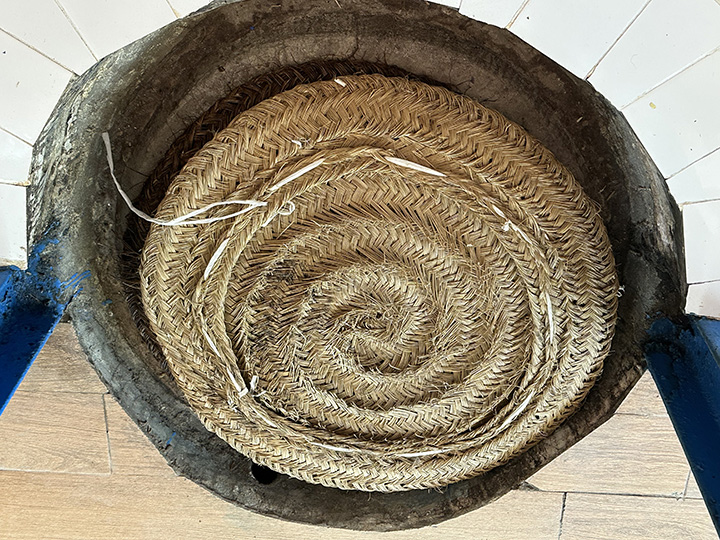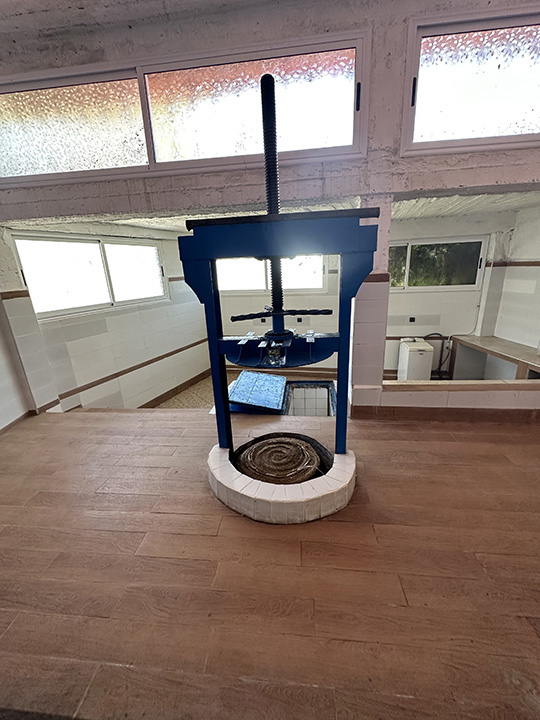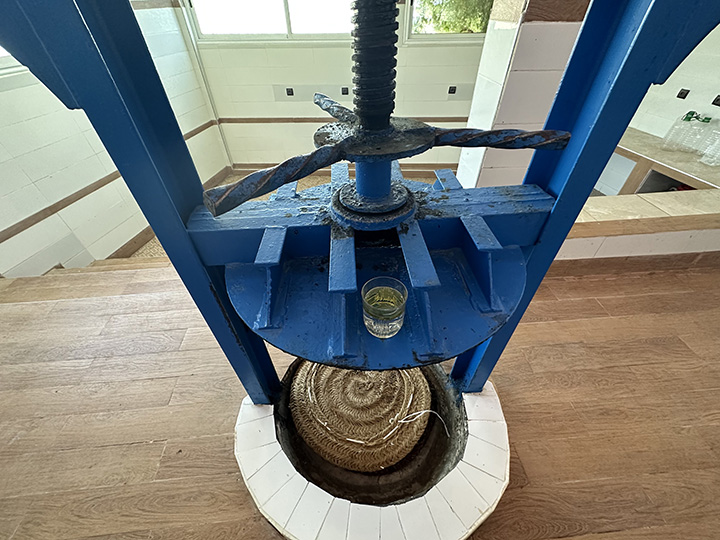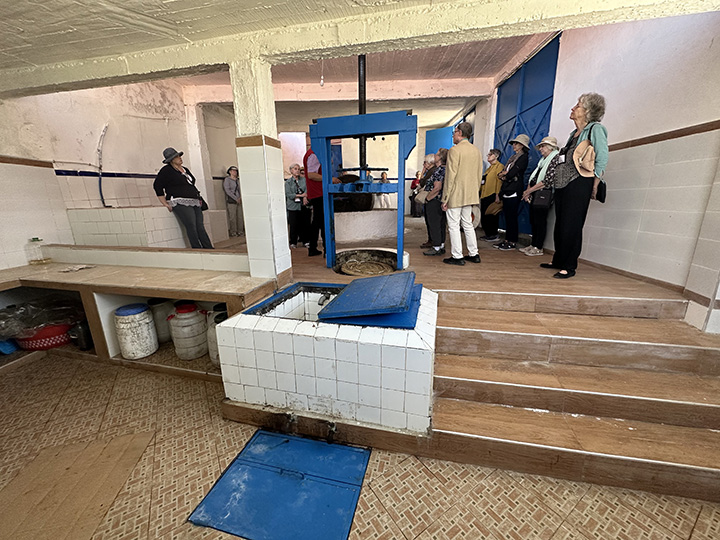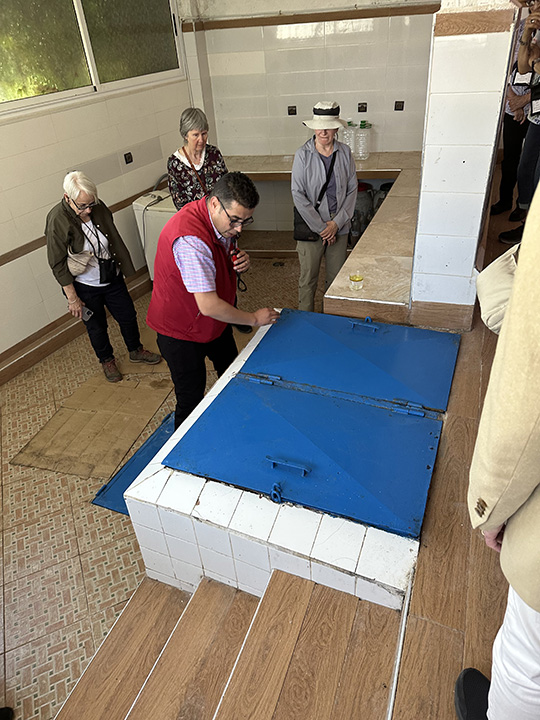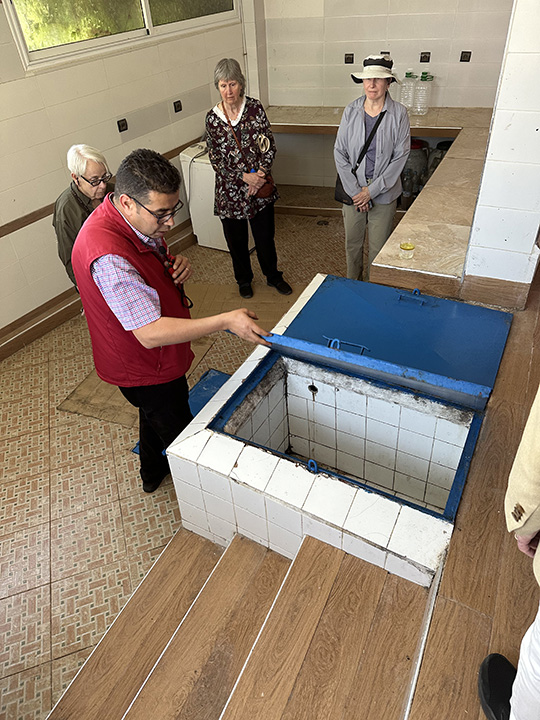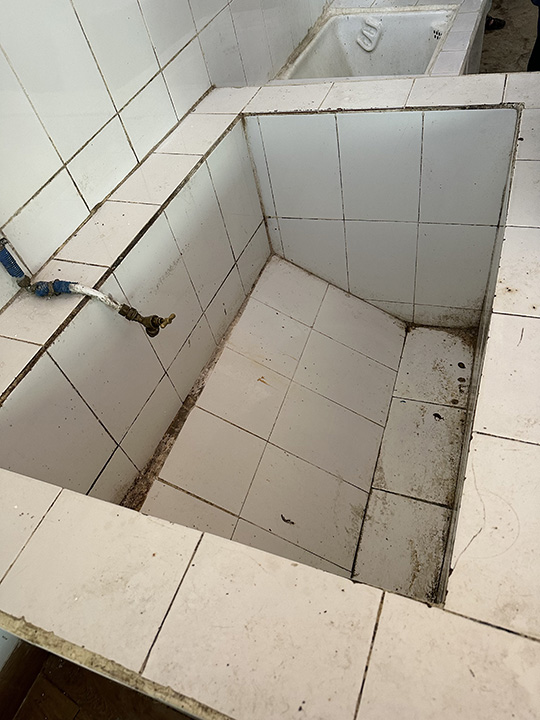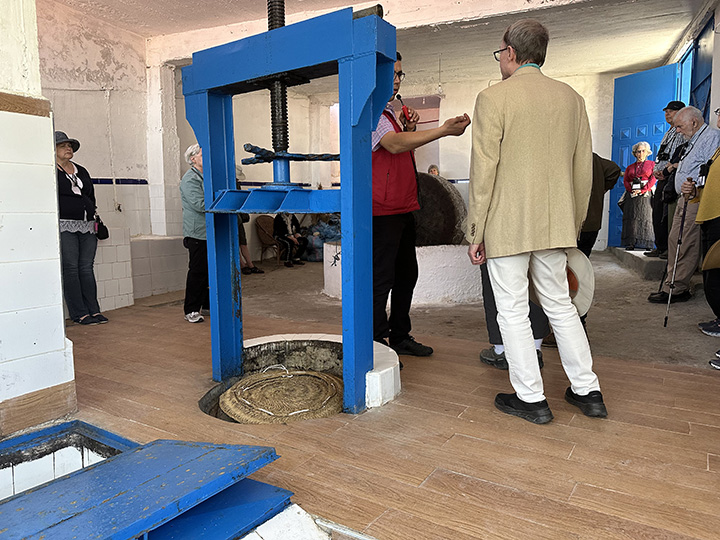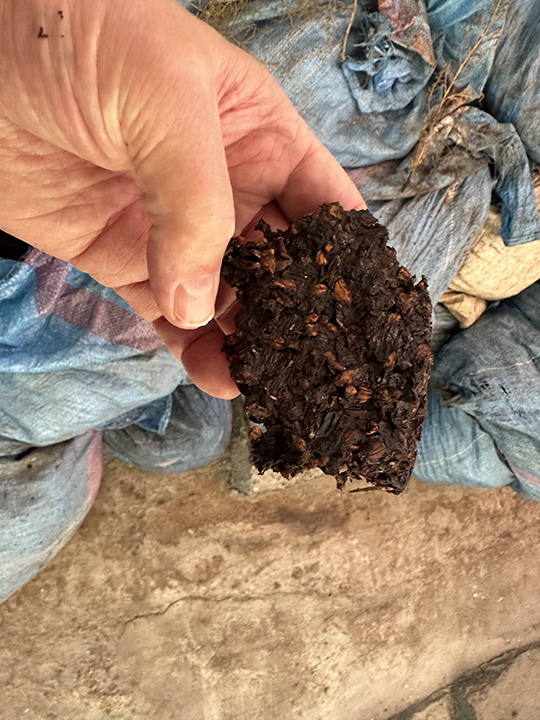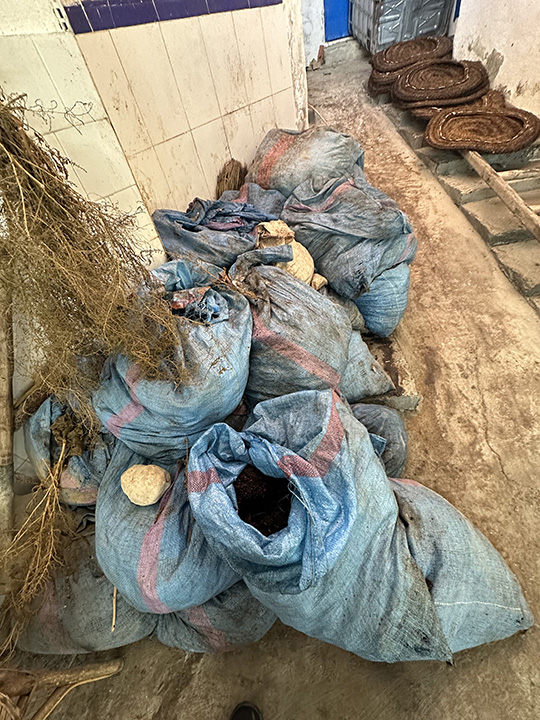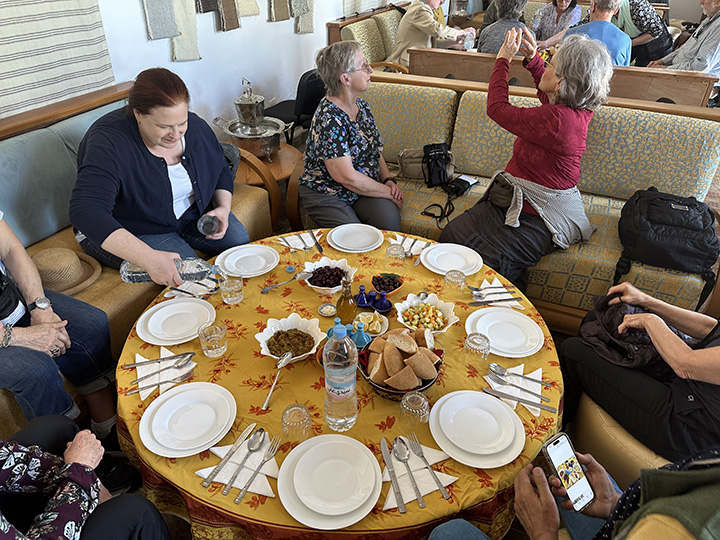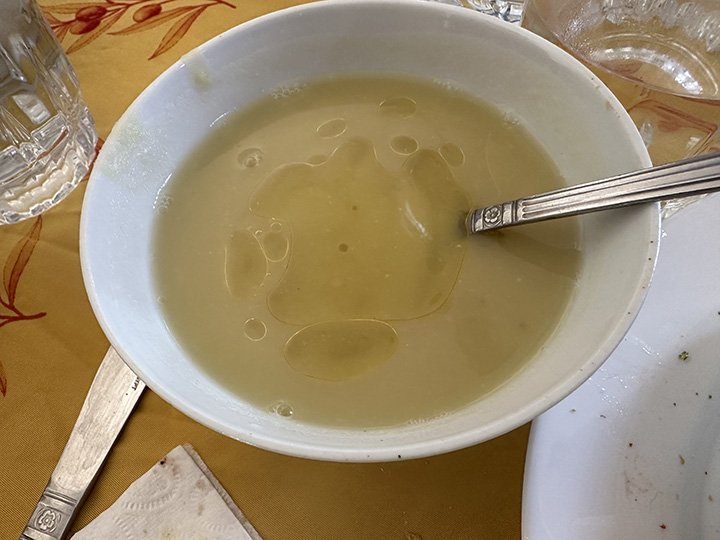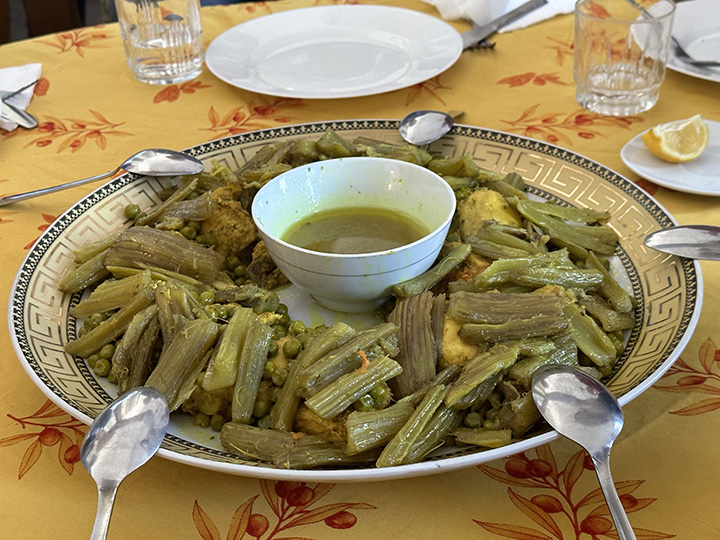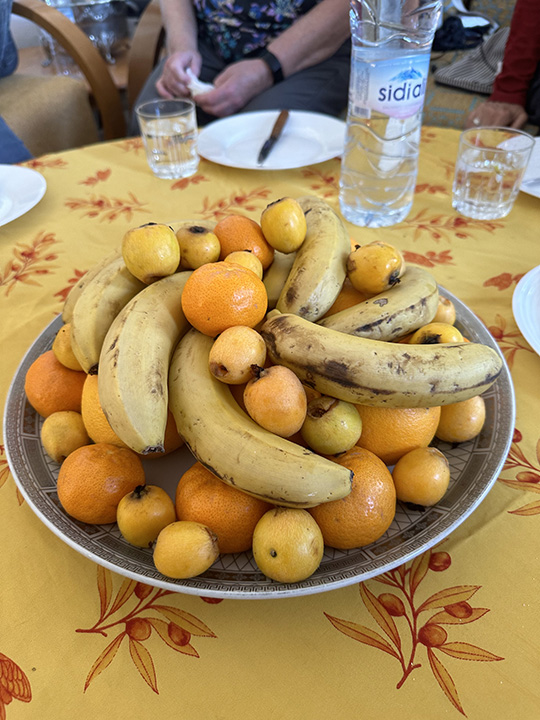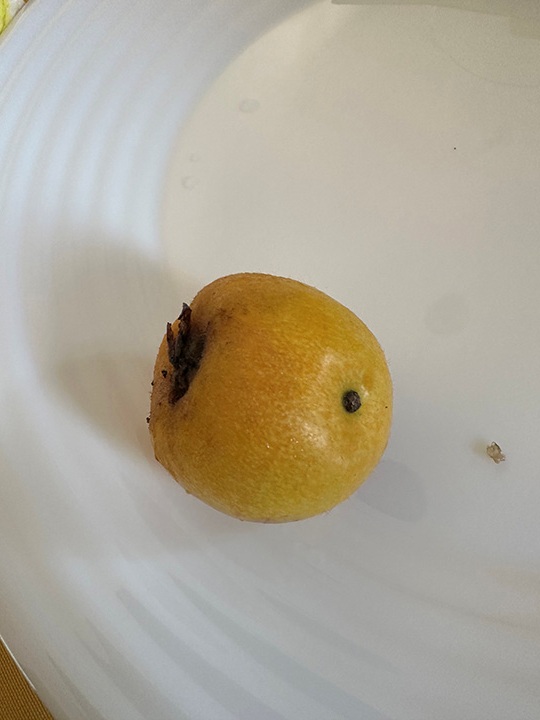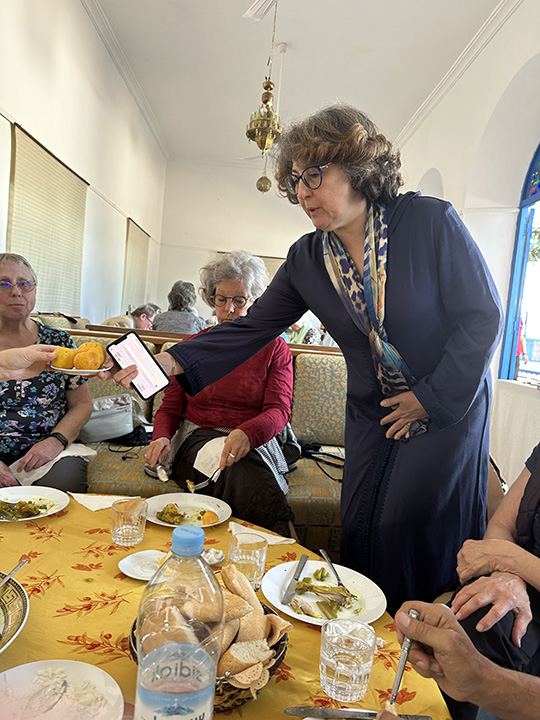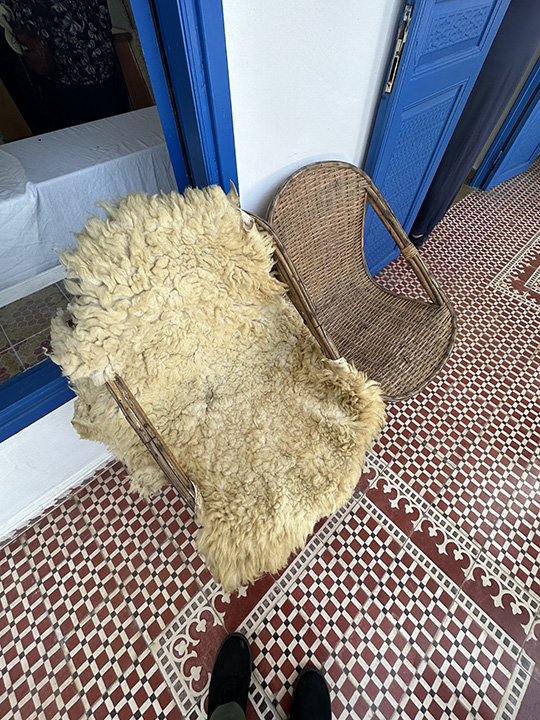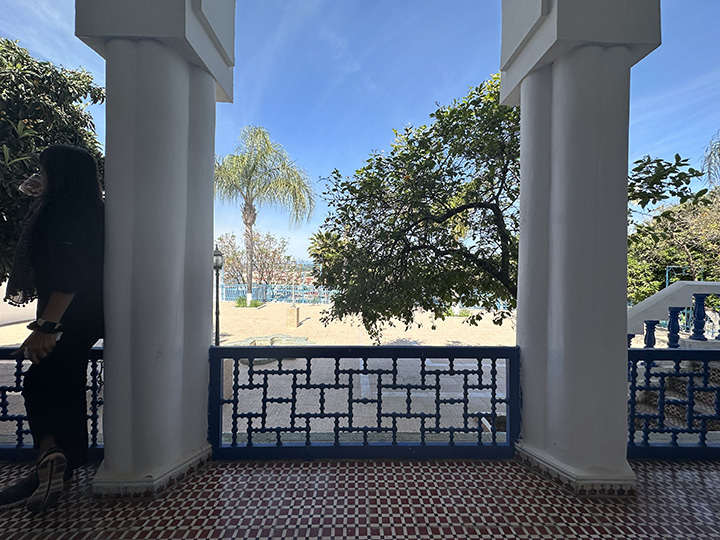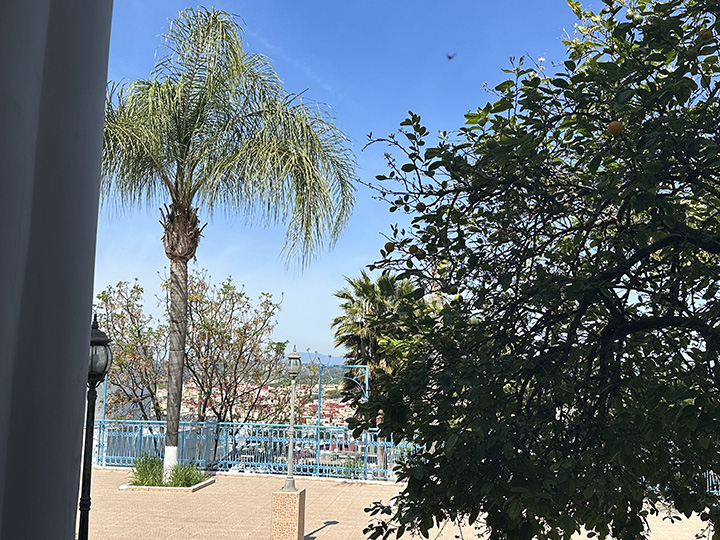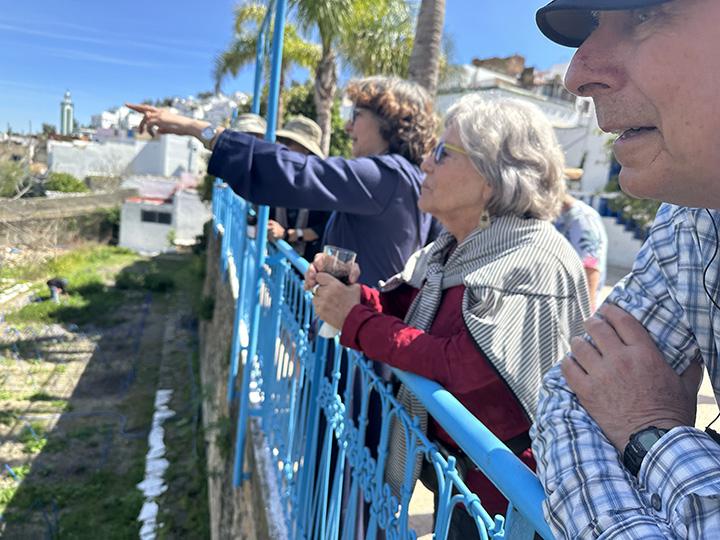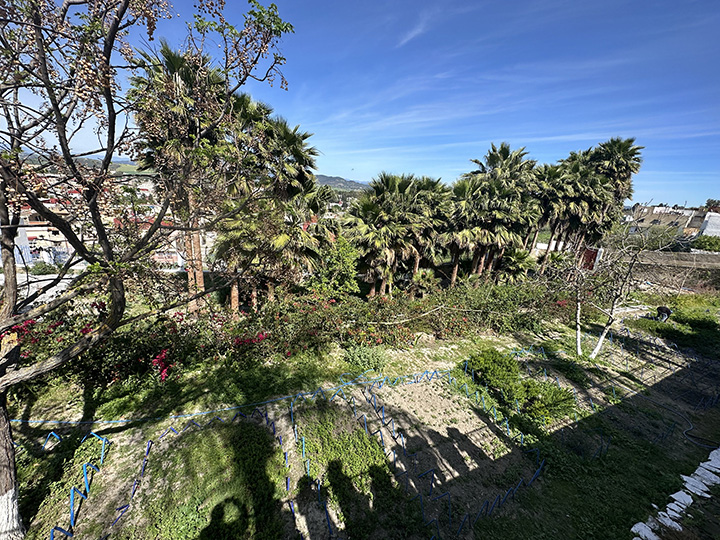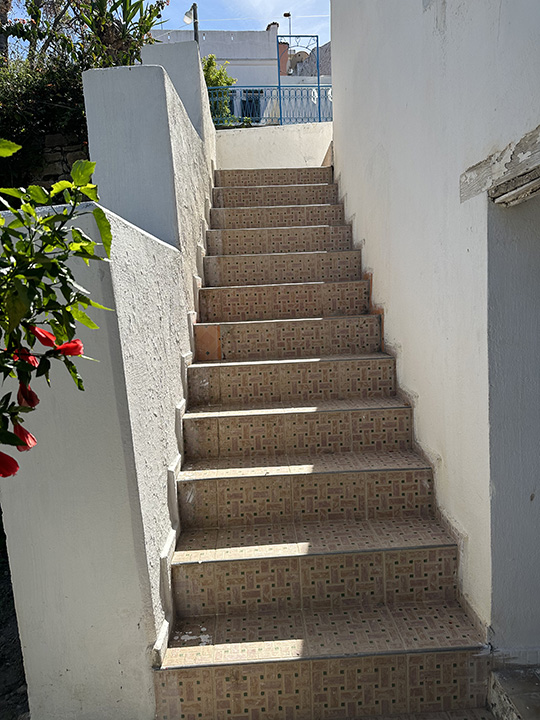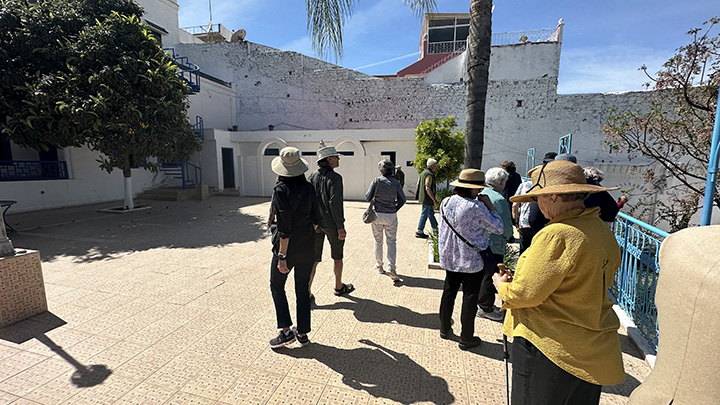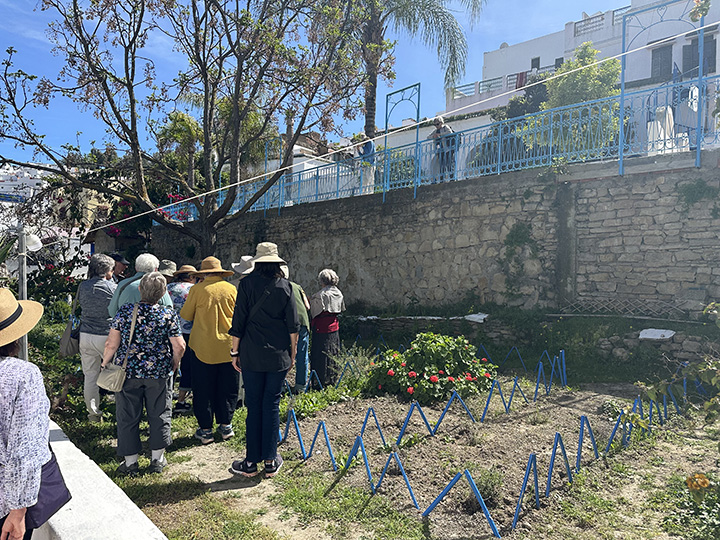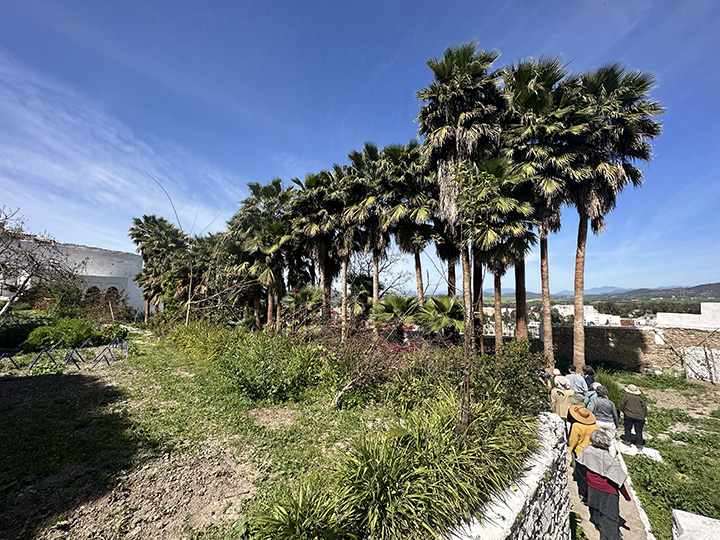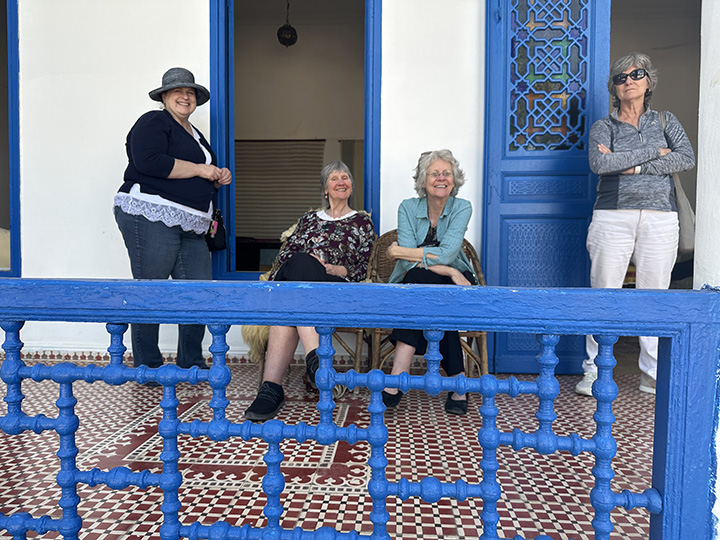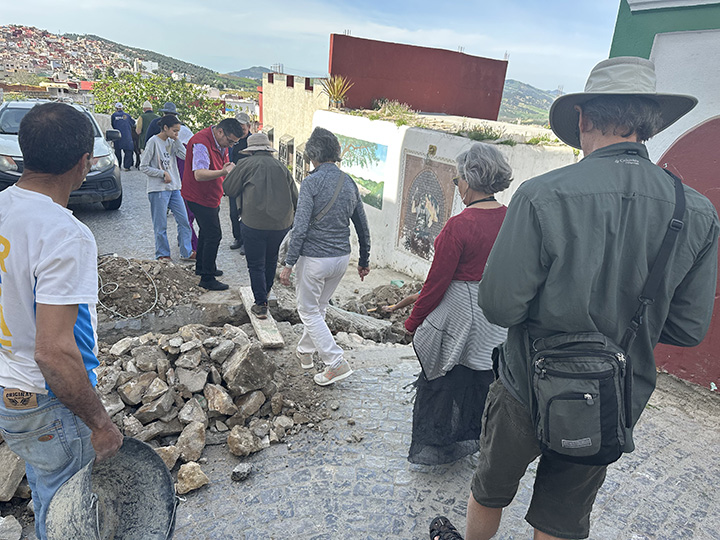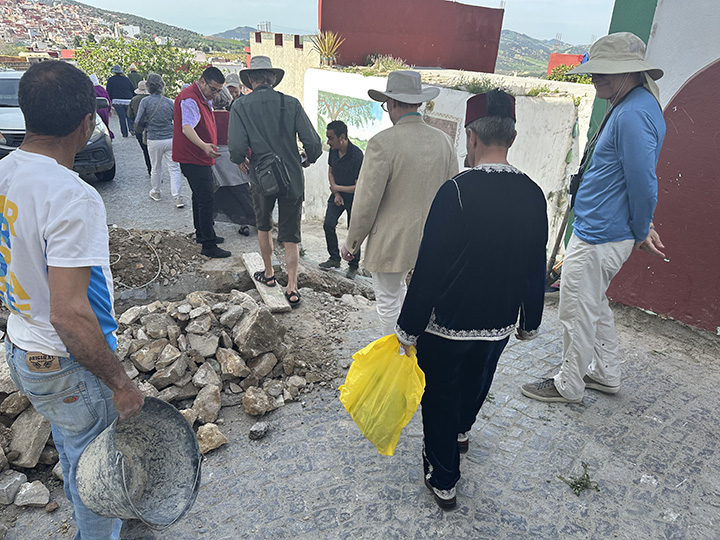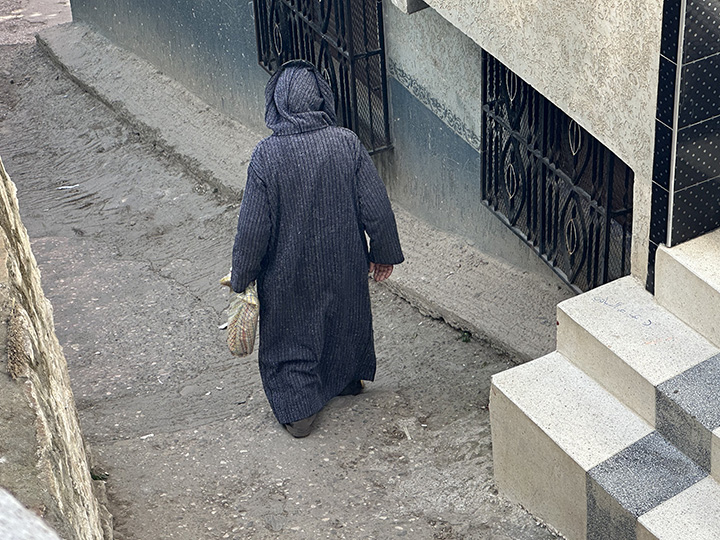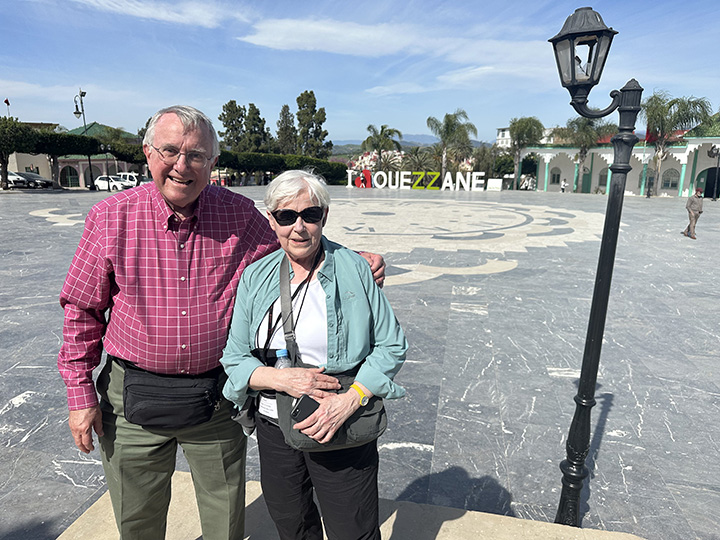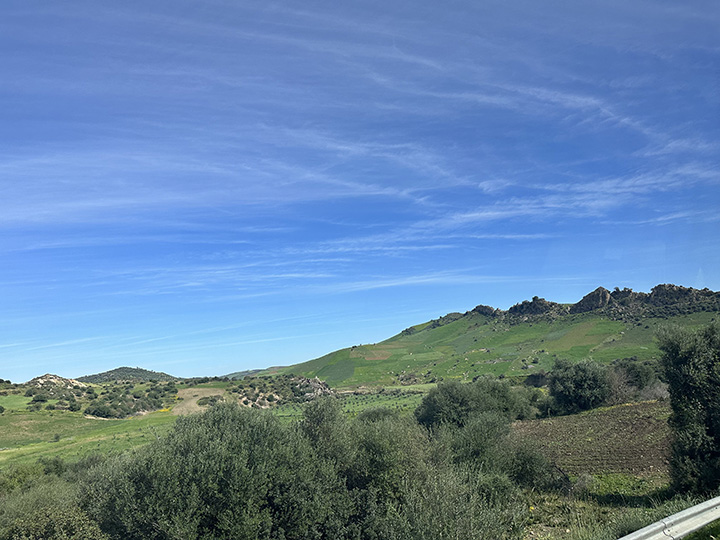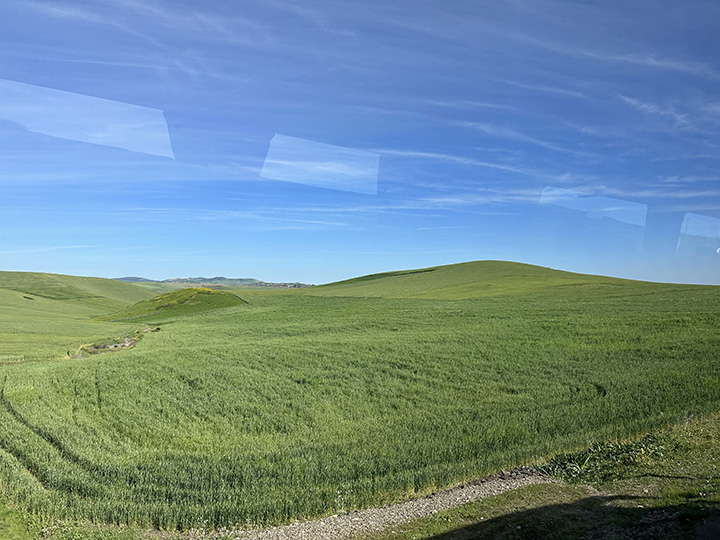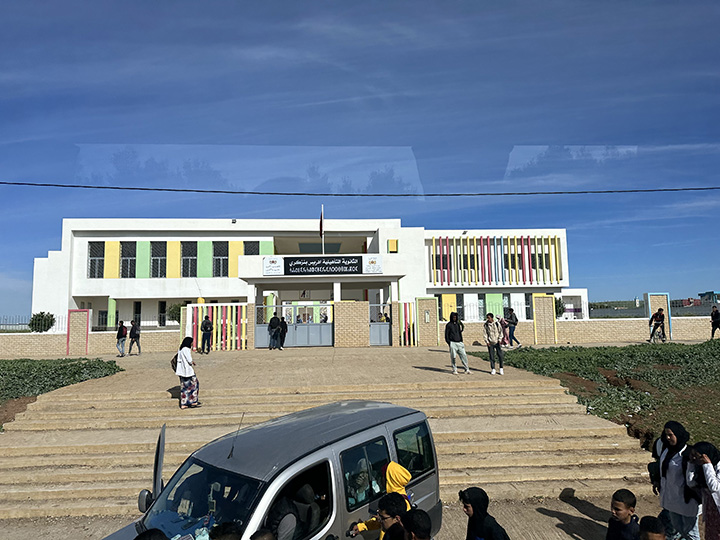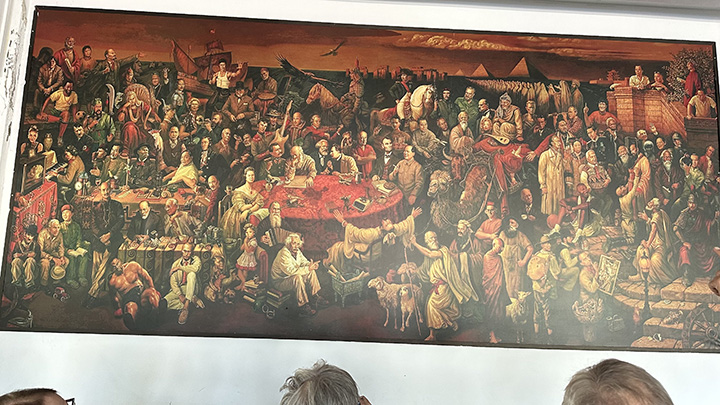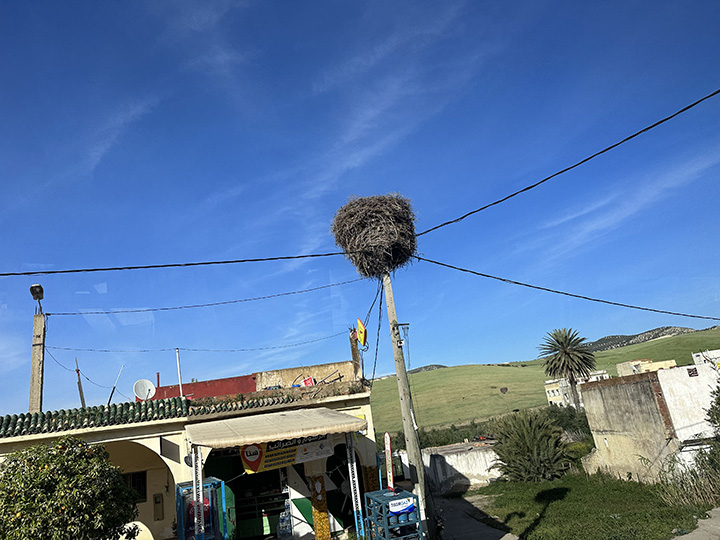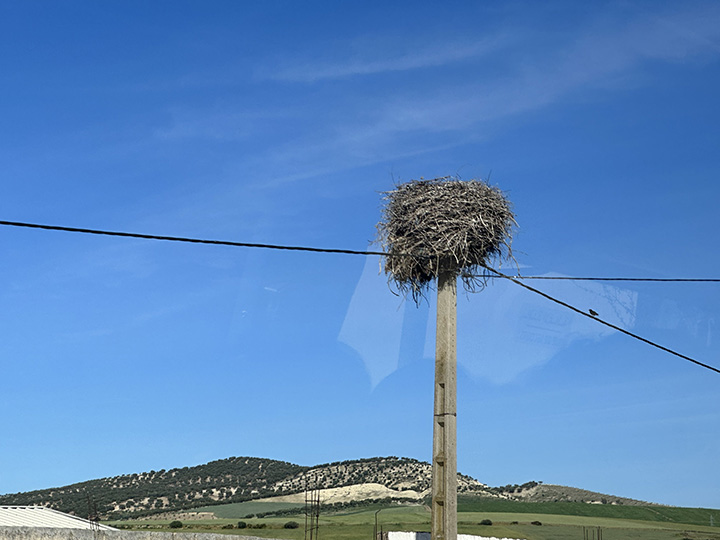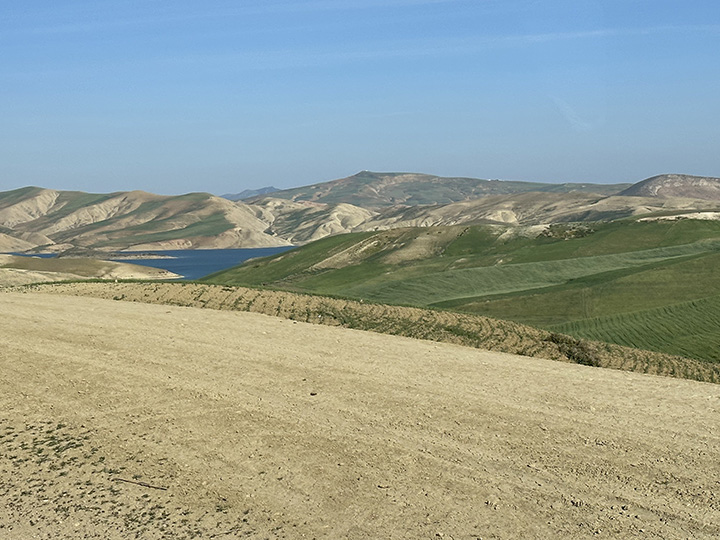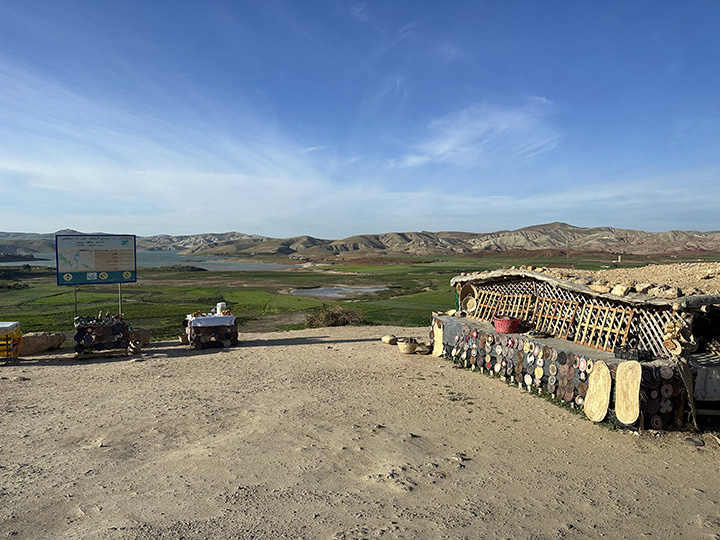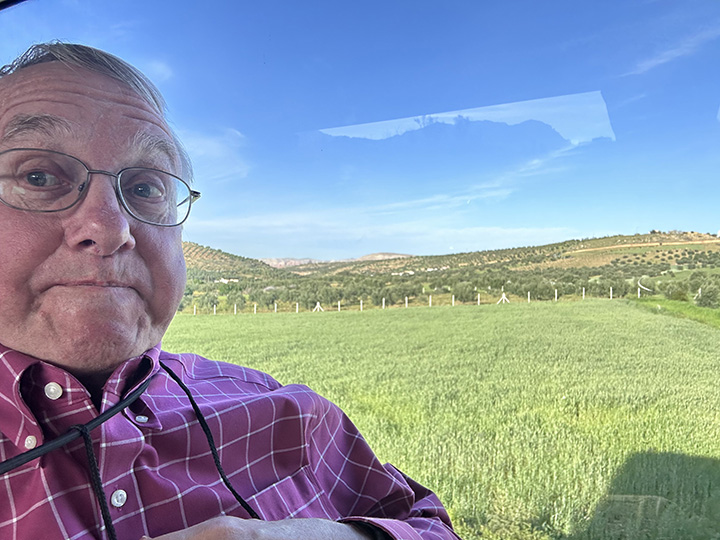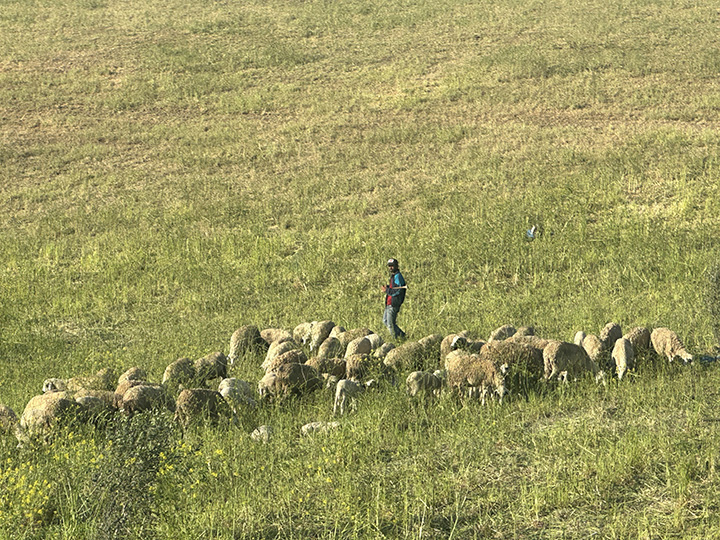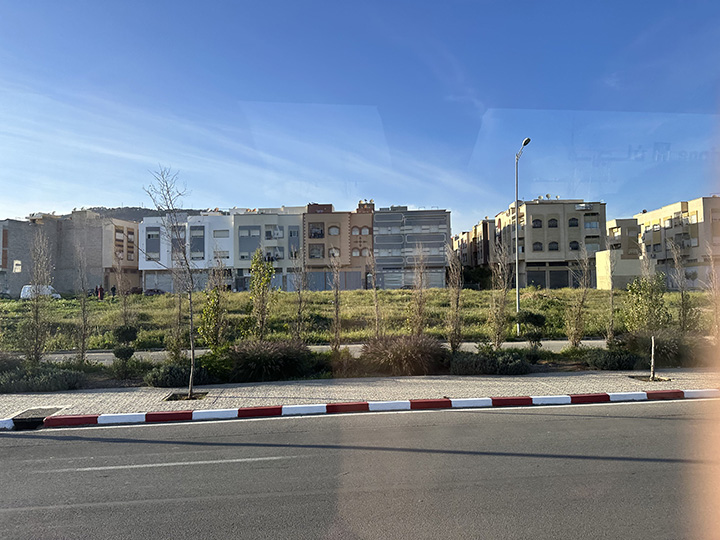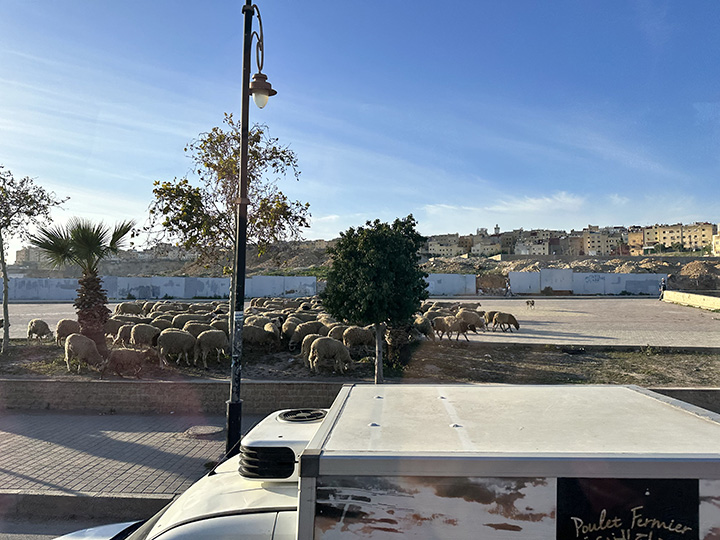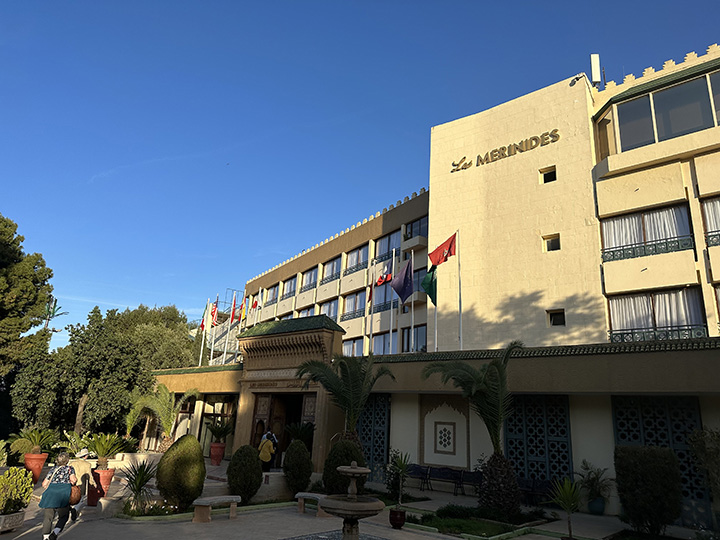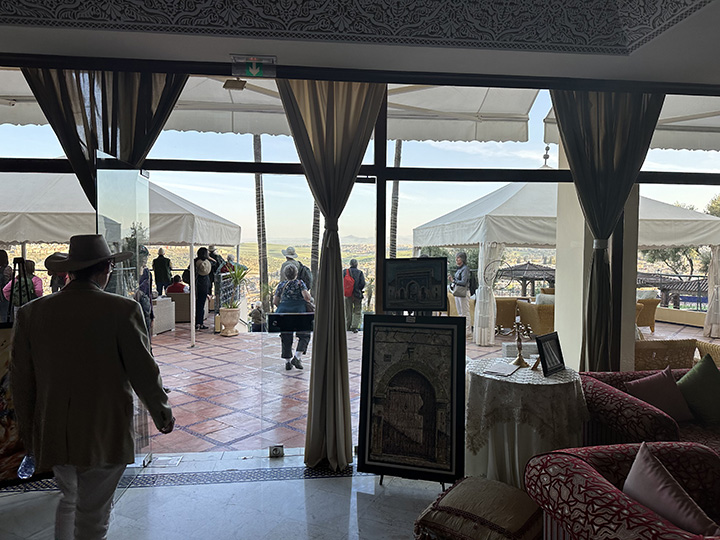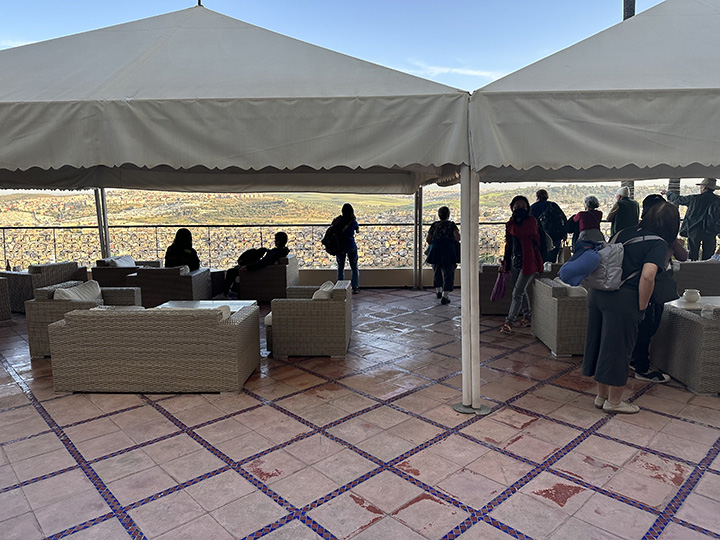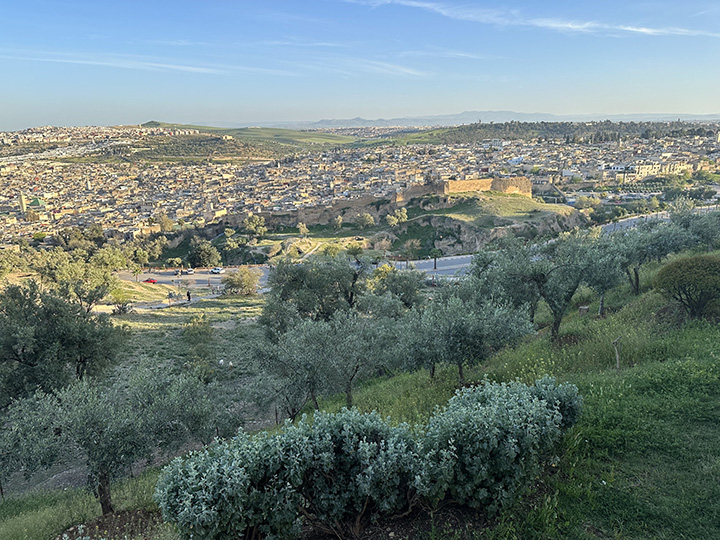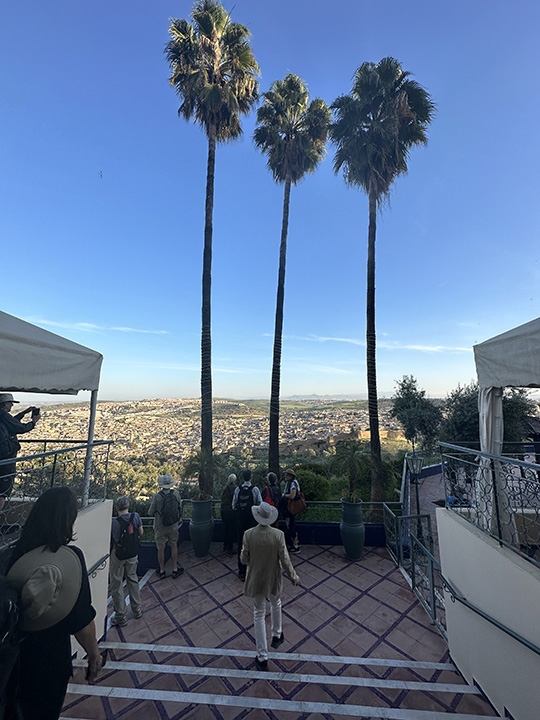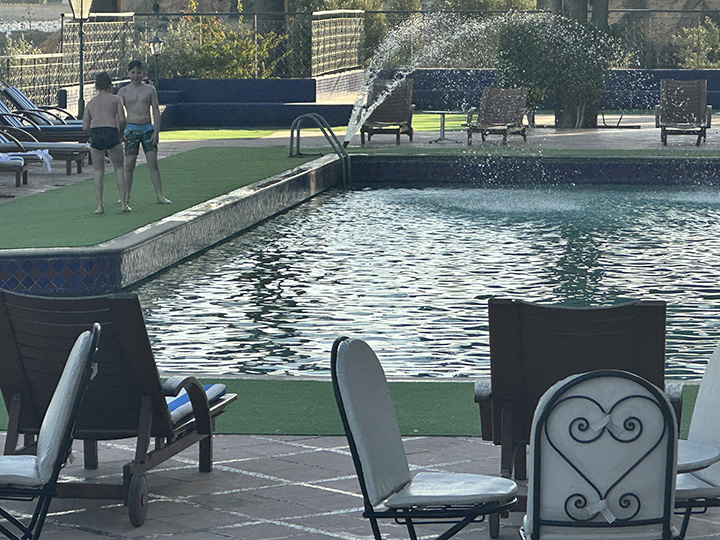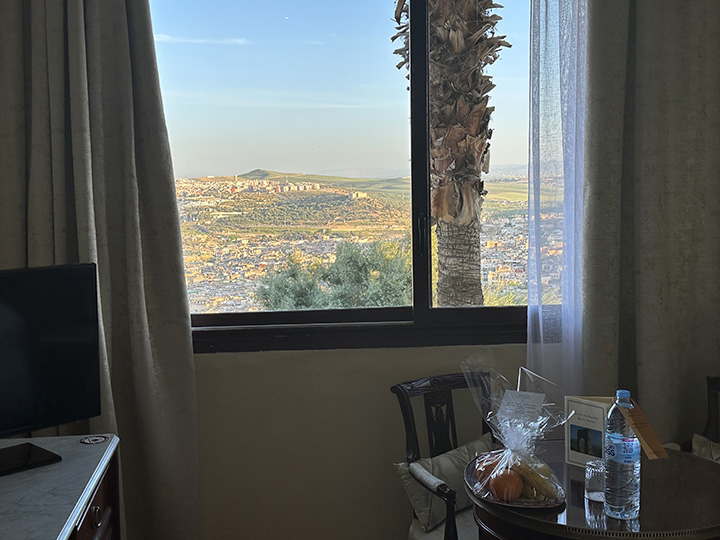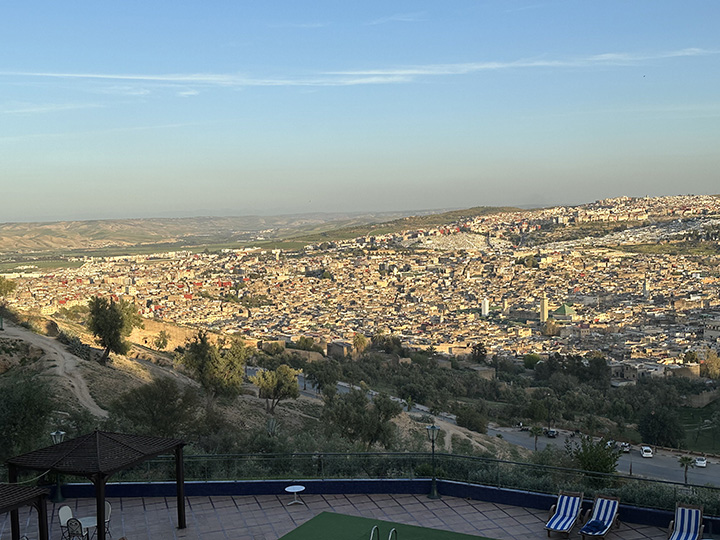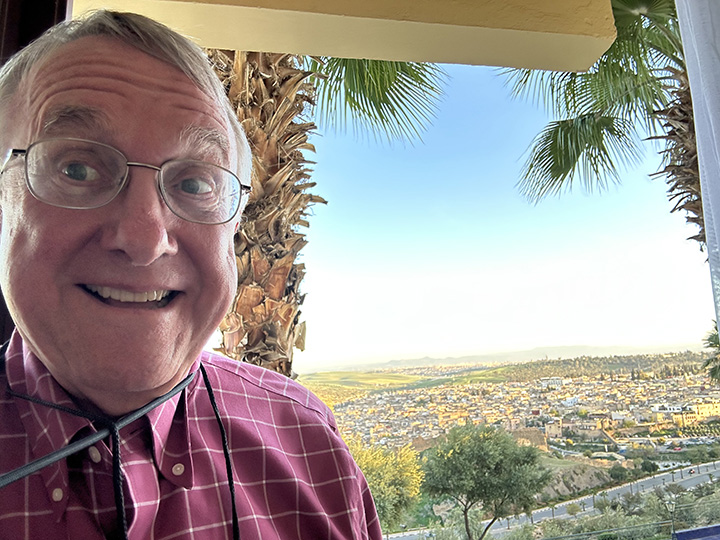|
This morning we said goodbye to the blue city and rode in the bus all the way to Fez. Along the way we stopped in the off-the-beaten-path town of Ouezzane where are we had lunch with Farah Cherif d’Ouezzan from the CCCL. Remember what that stands for?
In Arabic the name of the town, Chefchaouen, means “look at the two horns.” Those two peaks above the hotel are the horns.
Let's take a final look around the hotel grounds.
Here’s a view of the town just before we had to say goodbye to this lovely hotel.
Look at the two horns!
Some of the Road Scholars had their own little private villas up on the hill.
David is enjoying the view. I think those vines probably look better when they've sprouted leaves.
A few roses are nice, though.
We rode taxis back to the bus.
Lotsa construction in town. Would you want to work on that scaffolding?
They have fancy streetlights here.
We spent most of the day watching the countryside pass by the bus.
Those are cork trees. If you expand the picture you may be able to see where the cork has been cut from the trees. This does not kill the tree; the cork grows back.
There was a lot of countryside to pass by.
We saw mountains in the distance.
And rocks up close.
We even saw a woman dressed like Alexandra the other day. With a donkey even!
And then there was a potty break.
So why no food at this roadside stand that smells deliciously of wood fire and grilled meat? Well for one thing, it is Friday which is the Muslim Sunday, and for another thing everybody is fasting today because it’s Ramadan.
All we got to do was look at the butcher block where they carved up the chicken and beef and lamb and goat to be grilled.
Boy it smelled good over there.
But the Road Scholars were pretty much out of luck.
And then we hit the road again.
Only to arrive in Ouezzane a short time later. It’s a nice little town, unique even, but so far not too many tourists know about it.
Not much blue around here.
It's the Emerald City.
Just like Chefchaouen only green.
The Road Scholars are taking it all in.
A mellah is the place of residence historically assigned to Jewish communities in Morocco. The urban mellah, as it exists in numerous cities and large towns, is a Jewish quarter enclosed by a wall and a fortified gateway, typically near the residence of the sultan or governor.
So we are in the Jewish quarter.
Many Jews of Morocco consider Ouazzane to be a holy city and make pilgrimages here to venerate the tomb of several marabouts (Moroccan saints), particularly moul Anrhaz, the local name for Rabbi Amram ben Diwan, an eighteenth-century rabbi who lived in the city and whose burial site is associated with a number of miracles.
The Road Scholars make pilgrimages to see the sights.
As you can see.
The city of Ouezzane is well known in Morocco and in the Islamic world as a spiritual capital as it was the place for many of the pillars of Sufism. It was also known as "Dar Dmana".
Hi Alexandra!
It's hard to get a good view of the town from where we are.
These guys are doing some road work to the sidewalk, making our excursion a little treacherous.
Sufism is a branch of Islam. The whirling dervishes of Turkey are Sufis as are the young women who sang for us last night. Sufis venerate people as saints and believe it or not there are Jewish saints and Muslim saints in Sufi belief. This guy is one of them and his mausoleum is here.
Let’s press onward.
As he was preparing us for our walk through the narrow streets, Nabil warned us that people we encounter may say to us, “I love you.“ He explained that it doesn’t mean what you might think, but that in translation all it means is, “I like you.“ I’m glad he warned me because when this little guy cruised past on his bike, I smiled and said, “hi," and he shouted back, “mister, I love you.“ It was still a strange thing to hear, but at least I was prepared.
This is Farah’s second home and she has come here today to welcome the Road Scholars before heading back to Rabat for another presentation tomorrow. Very nice of her.
It is a lovely place.
And she is all set up to serve us lunch.
Bill likes the sound of that.
But first let's tour the grounds.
Those are loquats. I’ve heard of kumquats, but not this.
The Road Scholars are enjoying the tour.
And now they are headed to something special.
That is a traditional thatched roof.
And that is what it looks like up close.
This place has a museum.
Inside the room under the thatched roof are artifacts and drawings of Ouezzan.
Down this way they press olives.
Nabil explains how it all works. First you put your fresh olives in there with the big stone and then you attach that rod to the harness of a donkey and then you get the donkey to walk round and round until all the olives are nicely squished.
Then you scoop the crushed olives into woven bags like this.
Then you put a bag in the olive press.
And then you turn the handle to squeeeeeze it down.
While the olive oil flows out of the wicker bag and into a pipe which carries it to a lower vat.
Nabil shows how it works.
It goes right in here.
And then it goes over there. Don't worry, the vats are sparkly clean when olive oil is being made.
Here, Don, have a look at what's left after the press gets through with the crushed olives.
Looks delicious, right?
Stored in bags like these, he solid waste obtained after the extraction process, including pits, skin, and flesh of olives, is called pomace and can be used in a number of ways:
The Road Scholars are going to enjoy some of the olive oil for lunch.
Fava bean soup is considered low class food in morocco and it would never be served to guests, but Farah knows the Road Scholars would love to try the real thing and that’s what this is. See the olive oil floating on top? This dish was yummy.
The main course was cardoon with
chicken and couscous. What? You’ve never heard of cardoon? Me
neither, until today. It looks sort of like cooked celery and it has
a good flavor.
This was dessert.
The fruit included loquats from the tree outside. This thing puckered me right up.
Farah was a gracious hostess.
For a while I sat in a chair covered with a sheep skin on her veranda.
Nice view.
That's the city over there.
Farah took us on a tour of her garden
It's down there.
Below an awful lot of steps.
But the Road Scholars were not deterred.
They would see that garden.
And the city behind the palm trees.
Farah's lovely home away from home was just delightful.
But then it was time to leave.
I think OSHA did not approve this construction site walkway.
There's somebody in traditional garb.
Bill and Margaret say goodbye to Ouezzane.
Then we hit the road again. I came to Morocco thinking it was a desert country, but I was very wrong.
At least this part of Morocco is rich, fertile farmland. Looks just like Windows XP, doesn’t it?
Schools in Morocco are easy to spot because of their bright colors.
At our next party stop Nabil pointed out a large painting that was filled with famous faces from the past. You may be able to enlarge it and see how many you can identify. It was a fun way to pass a potty break.
Passing through one small town we spotted numerous stork nests atop poles.
There's a nest but there's no stork in sight.
I kept wondering how the farmers irrigated all these thousands of acres of farmland. It turned out there were reservoirs.
This roadside stand has a nice view of the lake.
Bill is happy to leave the driving to others.
That is a shepherd outstanding in his field.
Now we are entering Fez. I was amused to hear Nabil tell us that Fez is growing fast and all this land used to be olive groves. My father would often say the same thing about Memphis, only substitute cotton fields.
The city may be growing, but the sheep are still here.
Now we have arrived at Hotel Merinides, our home for the next three nights.
Nice place.
Nice patio.
With shade.
It's a lovely view.
I could sit up here for a while.
Don likes it too.
Even if I'd brought a swimsuit I probably wouldn't have taken a dip. But I sure thought about it.
Even my room has a great view.
Fez: which came first, the city or the hat? Turns out the hat is always dyed red and it takes its name from the red dye for which this city is synonymous.
Bill is going to like it here.
|

